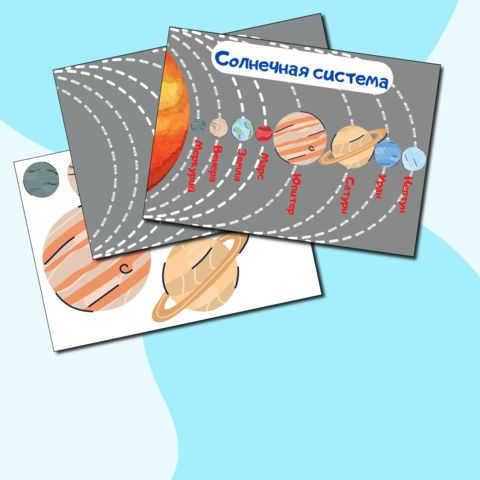1. How is the circular path that passes through a point to the north and a point to the south on the celestial sphere referred to?
2. Provide the name of the highlighted component:
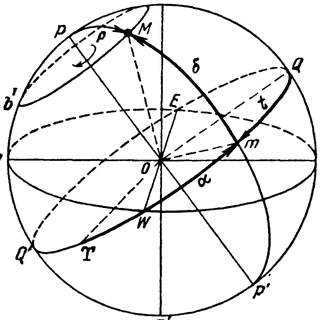
3. Can it be true that Masha’s grandmother was actually born on February 29, 1900?
4. Identify the type of telescope depicted in the diagram and label its various components.

5. Which type of telescope should Ilya use if he is flying from Kazan (UTC +3) to Yakutsk (+8) and needs to reach the meeting place by 20:00 local time? It takes 30 minutes to drive from the airport to the meeting place.
6. Determine the local time in the city of Kirovograd λ= 48° if it is 10 hours and 22 minutes according to Greenwich.
Control work №1 “Fundamentals of Astronomy”
1. What is the name of the circle on the celestial sphere that passes through the North and South Poles of the Earth?
2. Identify the element that is highlighted:
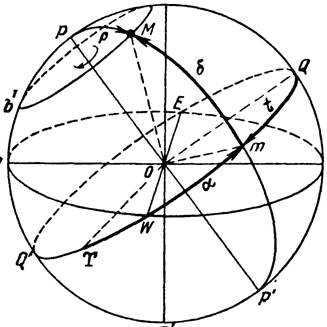
3. Can Masha’s friends believe that her grandmother was born on February 29, 1884?
4. Identify the type of telescope depicted in the diagram and label its various components.
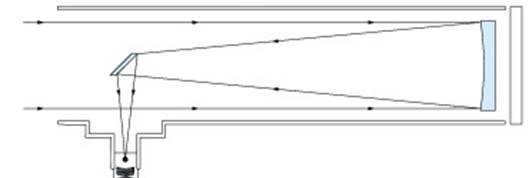
5. If Ilya needs to arrive at the meeting place at 19:00 local time, what flight should he take when flying from Kazan (UTC +3) to Yakutsk (+8)? Keep in mind that it takes 30 minutes to drive from the airport to the meeting place.
6. Determine the local time in the city of Kirovograd λ= 48° if the current GMT is 15:23.


An advanced training course is available for you to enhance your knowledge and skills in the banking industry.
Exploring the Latest Trends in Banking
In addition to the course fee discount, you may also be eligible for an extra discount based on your educational institution. The discount amount depends on the number of your colleagues who have previously enrolled in Infoworks courses.
Currently, Infoworks offers additional discounts ranging from 2% to 25% to 58,742 educational institutions. To determine the specific discount applicable to all employees of your institution, please log in to your personal Infoworks account.


Professional development course
School Conciliation Services and Restorative Mediation
We have the ability to include your educational institution’s discount in addition to this discount (it is dependent upon the number of your colleagues who have completed Infoworks courses)
Currently, there are 58,742 educational institutions that receive additional discounts (ranging from 2% to 25%). To discover which discount is applicable to all employees at your educational institution, please log into your personal Infoworks account.


Course for professional growth
Physical development and nutrition of overweight children in different age groups.
We can apply the discount offered by your educational institution to this course (the amount of discount depends on the number of your colleagues who have completed Infoworks courses).
Currently, 58,742 educational institutions provide additional discounts (ranging from 2% to 25%). To find out the specific discount that applies to all employees of your educational institution, please log in to your personal Infoworks account.
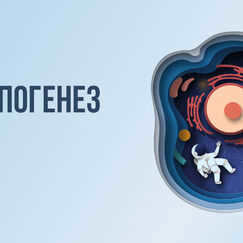
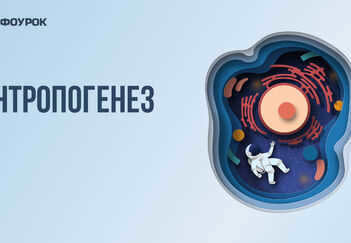
Anthropogenesis
- Evidence for a portfolio
- Unlimited access for only 99 rubles
- Over 3,800 video lectures available to all

Online courses for educators
Evgeny Yamburg and Pavel Severinets
Introducing innovations in the upcoming school year of 2023
Join our open session for teachers and educational organization leaders
Discover resources for any lesson by selecting your subject (category), grade level, textbook, and topic:
We have a database of 6,330,787 materials
These courses will capture your interest:
- Enhancing your skills in teaching astronomy at the secondary school level
- Mastering the art of developing business plans and analyzing investment projects
- Gaining a solid foundation in tourism management
- Exploring the intricacies of assessing business value in enterprise finance
- Discovering effective teaching methods for higher education in line with FSES guidelines
- Retraining yourself in the theory and methodology of teaching astronomy in educational institutions
- Staying up to date on the latest issues in banking activity
- Professional retraining program “Innovation-based Management of Information Environment”.
- Professional retraining program “Management System Organization for Transportation Services in Tourism”.
- Professional retraining program “Museum Business and Historical Monuments Protection: Theory and Methodology”.
- Retraining program “Sales Implementation and Coordination”.
- Retraining program “Organization and Management of Credit Brokerage Services Provision Process”.
- Professional retraining program “Technical Control and Technical Preparation of Welding Process”.
Share your thoughts
If you think that the content infringes copyright or should be taken down for another reason, you have the option to file a complaint regarding the content. Remove content
Content creator
- Member since: 4 years and 7 months ago
- Followers: 0
- Total views: 41734
- Total posts: 21
Online Courses for Educators
Duration: 38 minutes
Duration: 24 minutes
Duration: 50 minutes
Video Lecture: The Specifics of Designing and Organizing Lessons for Teaching Certain Sections of the Russian Language Course
The responsibility for resolving any disputes regarding the materials and their content lies with the users who have posted the material on the site. However, the site administration is prepared to offer full support in resolving any issues related to the site’s work and content. If you come across any unauthorized use of materials on this site, please notify the site administration through the feedback form.
All materials published on the site are either created by the site’s authors or posted by its users, and are provided for reference purposes only. The copyrights for these materials belong to their respective legal authors. Any partial or complete copying of the site’s materials without written permission from the site administration is strictly prohibited! The opinions of the administration may not necessarily align with those of the authors.

At present, there are additional combined discounts (ranging from 2% to 25%) that are offered to 58,742 educational establishments. To ascertain the applicable discount for all staff members of your educational institution, kindly sign in to your personal account on “Infoworks”.


Professional development program
School Conflict Resolution Services and Restorative Mediation
We have the ability to apply your school’s discount in addition to this discount (it is based on the number of your colleagues who have completed Infoworks courses).
Currently, there are additional cumulative discounts (ranging from 2% to 25%) available to 58,742 educational institutions. To determine the discount applicable to all staff members of your educational institution, log in to your personal Infoworks account.


Enrich your professional skills
Enhancing the physical development of children and addressing the nutritional needs of overweight children at different stages of growth.
We can apply an exclusive discount for your educational institution (the discount percentage will depend on the number of colleagues who have completed Infoworks courses).
Currently, 58,742 educational institutions are eligible for additional discounts ranging from 2% to 25%. To discover the specific discount available for all employees of your institution, simply log in to your personal Infoworks account.


The Evolution of Humanity
Overview of the Presentation by Slide:


Two key aspects of astronomical research methods
Scientists gather information about events occurring beyond Earth in outer space primarily through the study of light and other forms of radiation emitted by celestial objects. Observations serve as the primary means of obtaining information in the field of astronomy.
This initial characteristic!
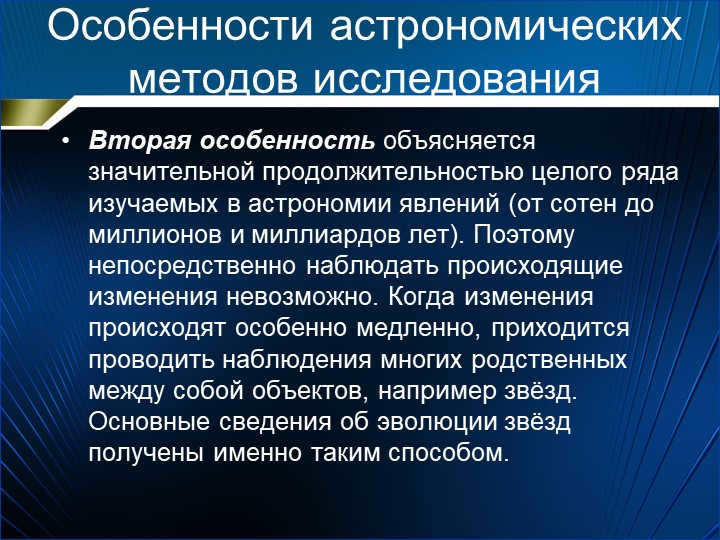
Slide 3: Unique Aspects of Astronomical Research Methods
The second aspect is elucidated through the considerable duration of various astronomical phenomena (ranging from hundreds to billions of years). This renders direct observation of these changes impossible. In cases where changes occur at an exceptionally slow pace, observations of numerous interconnected celestial bodies, such as stars, must be conducted. It is through this method that the primary insights into stellar evolution are obtained.

Slide 4 Features of astronomical research methods
The third characteristic of astronomy arises from the need to determine the spatial position of celestial objects (their coordinates) and the inability to discern which ones are closer and which ones are farther away from us. Initially, all observed celestial bodies appear equally distant to us.

5 Unique Features of Astronomical Research Methods
Many centuries ago, ancient civilizations held the belief that all the stars resided on a celestial sphere, which revolved around the Earth. Over 2000 years ago, astronomers started using methods to determine the position of celestial objects in relation to other cosmic entities or landmarks on Earth. The concept of the celestial sphere continues to be useful in modern times, despite the knowledge that it is not a physical reality.

In astronomy, the telescope is the primary tool for observing celestial bodies and analyzing the radiation they emit. The term “telescope” is derived from the Greek words “tele” meaning “far away” and “skopéo” meaning “looking”.
Telescopes are essential for astronomers to study distant objects in space and gather valuable data about the universe.
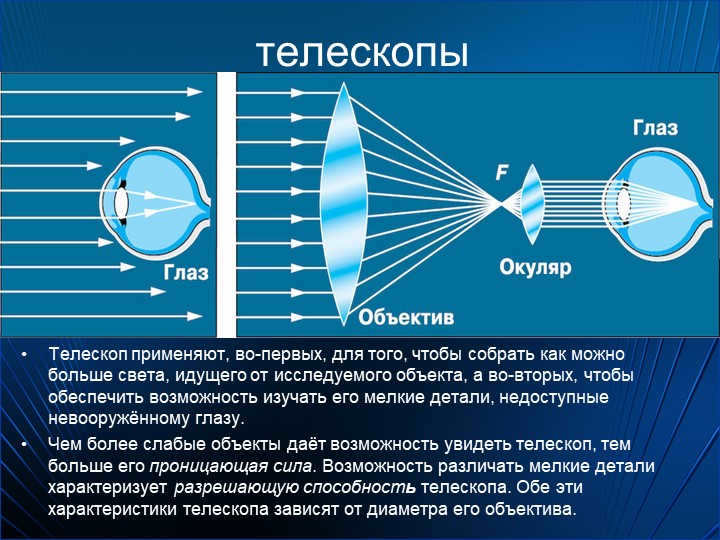
There are 7 different types of telescopes available. The primary purpose of a telescope is to gather a maximum amount of light from the object being observed. Additionally, it allows for the study of fine details that are not visible to the naked eye. The telescope’s ability to reveal faint objects determines its penetrating power. The resolving power of the telescope is determined by its ability to distinguish fine details. Both of these characteristics are dependent on the diameter of the telescope’s objective lens.
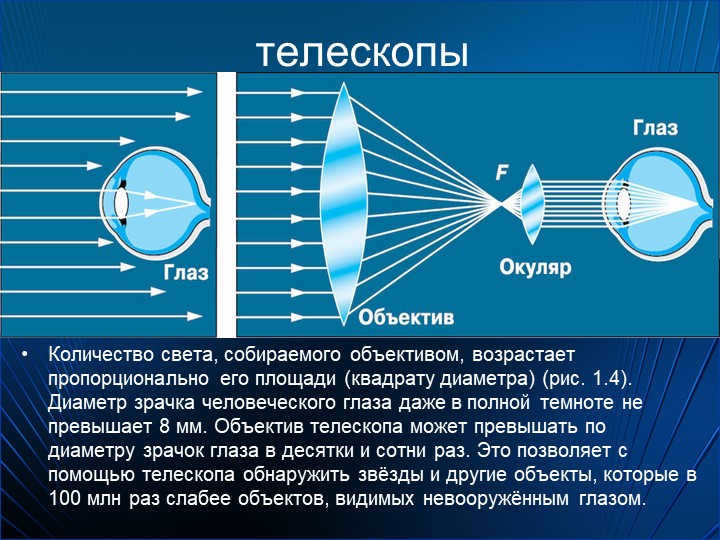
When it comes to telescopes, the amount of light that is collected by a lens increases in direct proportion to its size (as demonstrated in Figure 1.4). The human eye, even in complete darkness, has a pupil diameter that does not exceed 8 mm. However, the diameter of a telescope lens can be tens or even hundreds of times larger than the pupil of the eye. This significant increase in size allows telescopes to detect stars and other celestial objects that are 100 million times fainter than what can be seen with the naked eye.

When a lens is used as the objective in a telescope, it is referred to as a refractor (derived from the Latin word “refracto”, which means refracting). On the other hand, if a reflector is used, it means that a concave mirror is utilized.
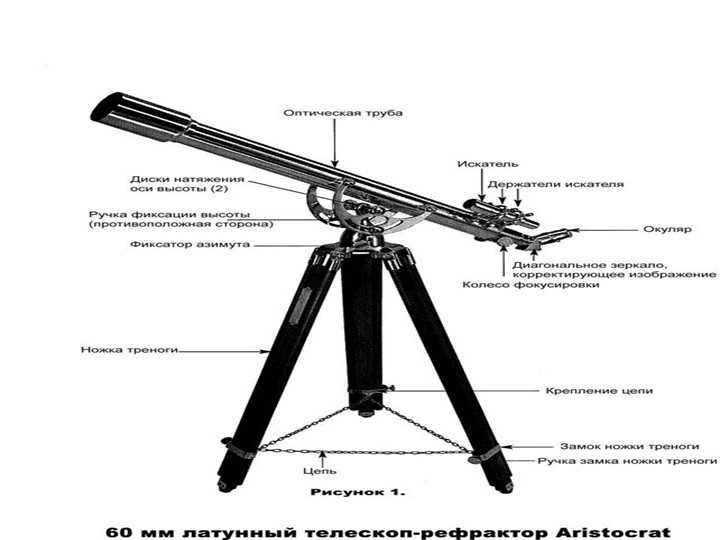
There are currently different types of telescopes being used, including refractors and reflectors. One particular type is the meniscus telescope, which utilizes a combination of mirrors and lenses.
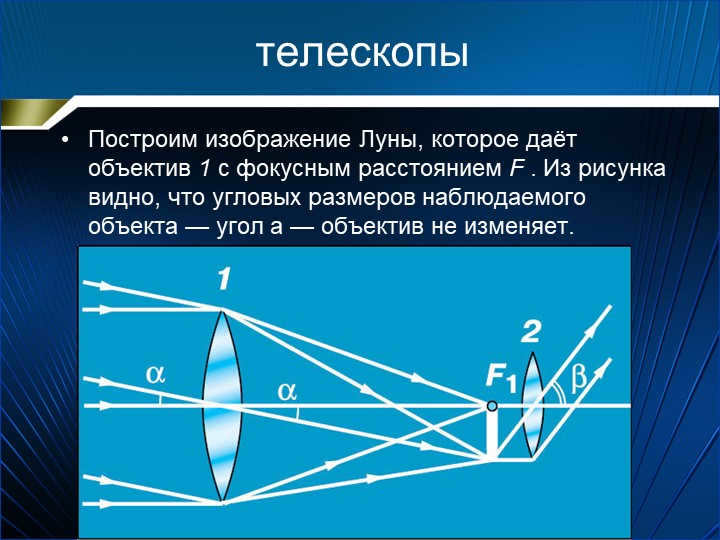

Slide number 12: Let’s create a representation of the Moon using a lens 1 with focal length F. The diagram illustrates that the lens does not alter the angular dimensions of the observed object, denoted by angle a.
Additionally, this diagram pertains to telescopes.
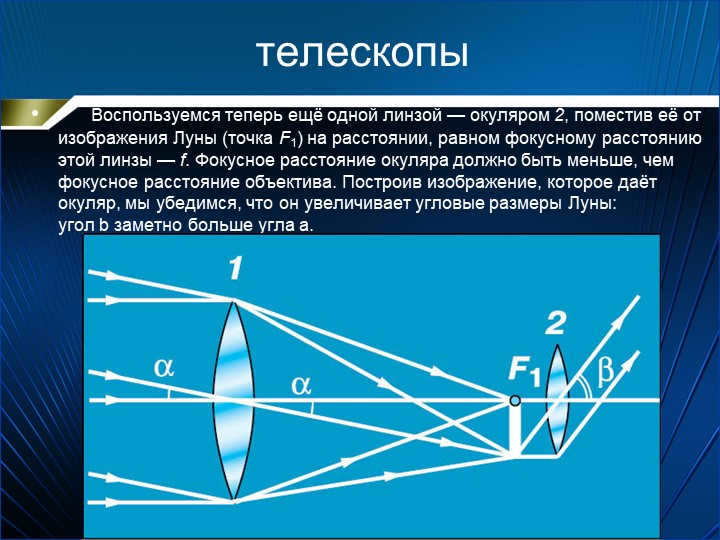
Let’s now utilize a different lens, eyepiece 2, positioning it at a distance equal to the focal length of this lens – f, from the image of the Moon (point F1). It is important to note that the focal length of the eyepiece should be shorter than the focal length of the lens. When we visualize the image produced by the eyepiece, we observe that it amplifies the angular size of the Moon: angle b is significantly larger than angle a.
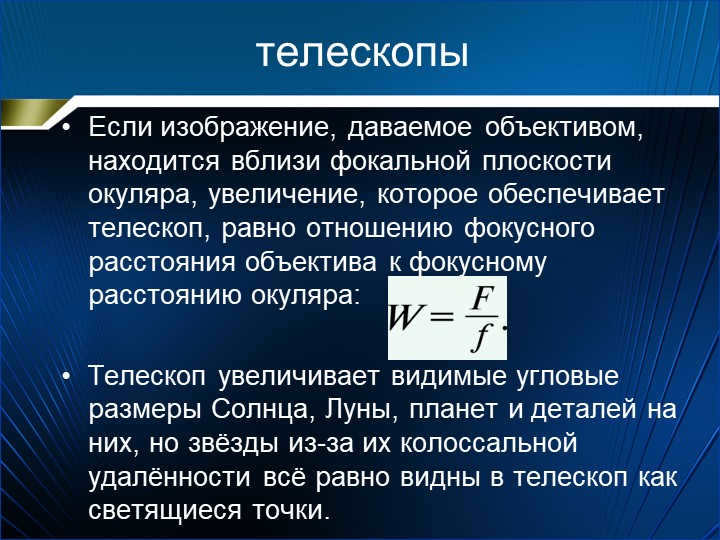

There are 14 types of telescopes. If the image given by the lens is close to the focal plane of the eyepiece, the magnification provided by the telescope is equal to the ratio of the focal length of the lens to the focal length of the eyepiece:
A telescope increases the apparent angular sizes of the Sun, Moon, planets, and the details on them. However, stars, due to their immense distance, are still visible in a telescope as luminous dots.

Telescopes with interchangeable eyepieces offer the unique advantage of being able to obtain different views using the same lens. This allows for a versatile and customizable viewing experience. In the field of astronomy, the capabilities of a telescope are often measured by the diameter of its objective lens rather than the magnification. This is because different magnifications can be achieved by simply swapping out the eyepiece. It is common practice to use magnifications of less than 500 times in astronomy, as higher magnifications are hindered by the Earth’s atmosphere.

Slide 16: Telescopes
The contemporary telescope is a sophisticated apparatus that incorporates highly accurate optics of immense proportions, state-of-the-art radiation detectors, and a comprehensive array of scientific and operational instruments. Reflector telescopes are the predominant type among the largest modern telescopes.
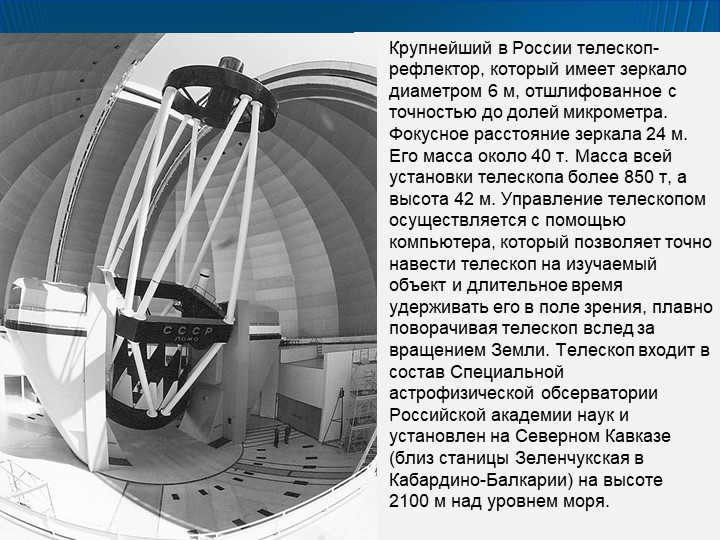
There is a 17-slide telescope in Russia that stands out for its size. It boasts a massive 6-meter diameter mirror that is polished to an exceptionally precise level within a fraction of a micrometer. The mirror has a focal length of 24 meters and weighs approximately 40 tons. The entire telescope installation weighs over 850 tons and reaches a towering height of 42 meters. Thanks to a computer control system, the telescope can be accurately directed towards the desired celestial object and tracked smoothly as the Earth rotates. This remarkable piece of technology is housed at the Special Astrophysical Observatory of the Russian Academy of Sciences, situated in the North Caucasus near the village of Zelenchukskaya in Kabardino-Balkaria. Perched at an altitude of 2100 meters above sea level, it offers a prime location for astronomical observations.
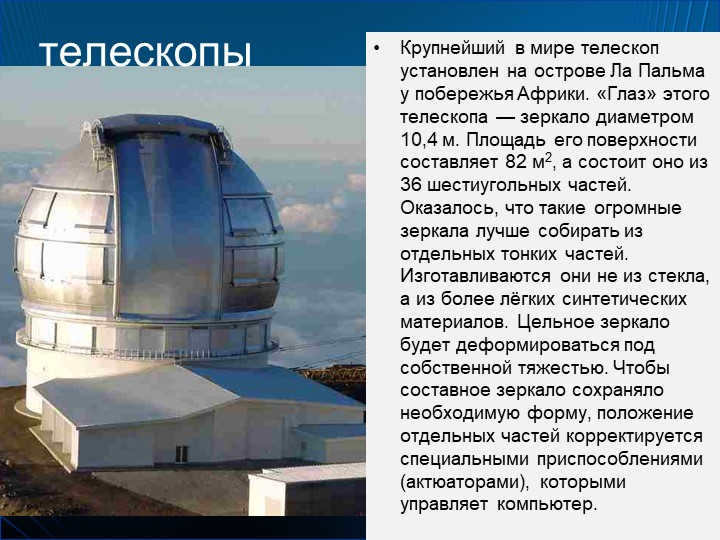

There are 18 slide telescopes in total. The biggest telescope in the world is situated on the island of La Palma near the coast of Africa. This remarkable telescope features a mirror with a diameter of 10.4 meters, making it the “eye” of the instrument. The mirror is composed of 36 hexagonal parts, creating a surface area of 82 m2. The use of individual components allows for better construction of such large mirrors, as a single piece would deform under its own weight. Instead of using glass, these mirrors are made from lightweight synthetic materials. In order to maintain the necessary shape, special devices known as actuators are used to adjust the position of the individual parts. These actuators are controlled by a computer.
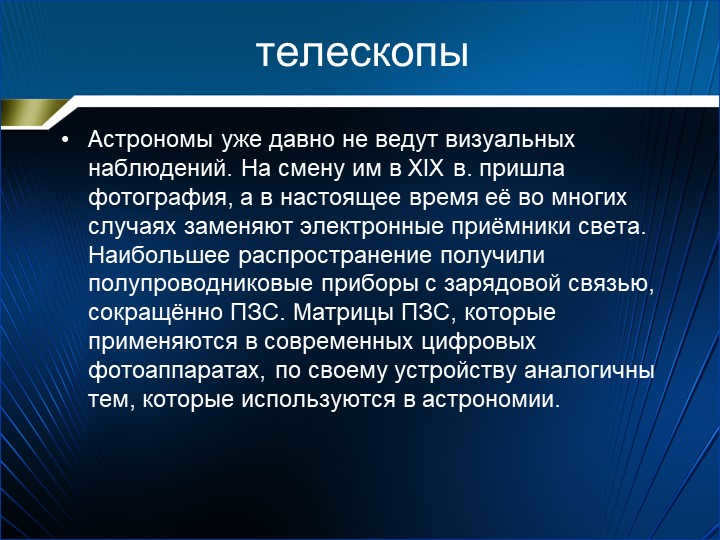
Telescopes have evolved significantly over time. Astronomers no longer rely solely on visual observations, as they did in the past. In the 19th century, photography became a popular method of capturing celestial images. However, in modern times, electronic light receivers have taken over in many cases. One such receiver is the charge-coupled semiconductor device (CCD), which is commonly used in digital cameras. Interestingly, CCD matrices used in these cameras are similar to those used in astronomy.

There are 20 slide telescopes. The primary characteristic of CCDs, which make use of the internal photoelectric phenomenon, is their remarkable sensitivity. They capture virtually every single photon that interacts with them. Equally significant is the fact that the images captured in this process are digitally recorded with the assistance of a computer. This digital recording is convenient for conducting various research and sharing with other scientists. Some telescopes even have the capability to stream these images directly to internet users, enabling a wide range of people, including school children, to actively participate in astronomical observations.
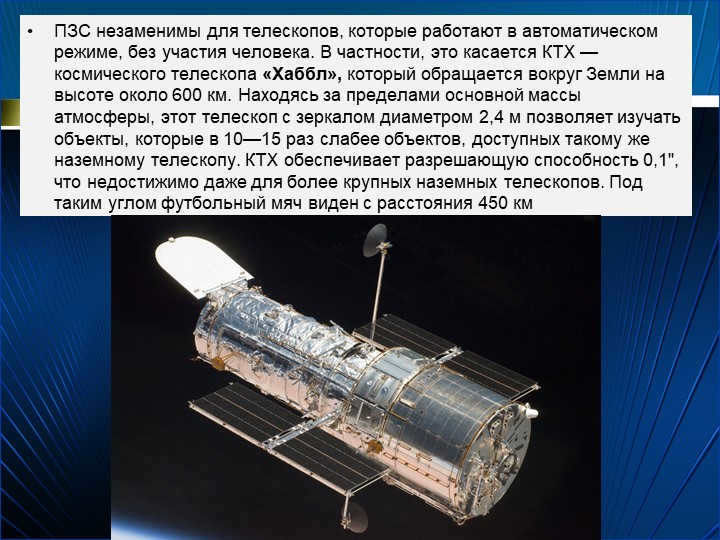

Telescopes with CCDs are crucial for telescopes that function without human intervention. This is especially true for the CTX and the Hubble Space Telescope, which orbits the Earth at an altitude of approximately 600 kilometers. Being located outside of the majority of the Earth’s atmosphere, this telescope, equipped with a 2.4-meter diameter mirror, enables the study of objects that are 10-15 times dimmer than those observable with a comparable ground-based telescope. The CTX provides a resolution of 0.1ʺ, which is unachievable even for larger ground-based telescopes. At this level of precision, a soccer ball can be seen from a distance of 450 km.
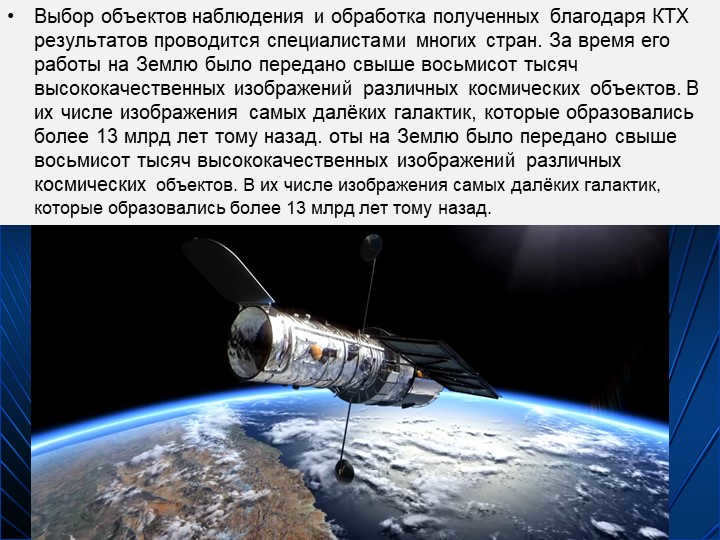
There are 22 telescopes in use for observing different space objects and processing the data collected by CTX. This work is conducted by experts from various countries. Over the course of their work, they have transmitted over 800,000 high-quality images of various cosmic objects back to Earth. These images include those of the most distant galaxies, which were formed over 13 billion years ago.

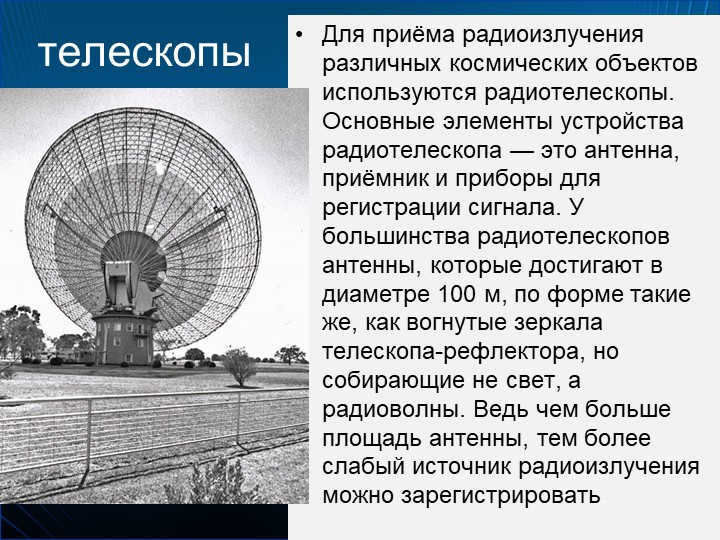
Telescopes have 24 slides.
Radio telescopes are utilized for the reception of radio emissions from different celestial objects. The key components of a radio telescope apparatus include an antenna, a receiver, and tools for signal recording. The majority of radio telescopes feature antennas that have a diameter of up to 100 meters, resembling the concave mirrors of reflecting telescopes, but rather than collecting light, they capture radio waves. In essence, the greater the surface area of the antenna, the more sensitive it is to detecting faint radio sources.

25 slide Telescope
The electromagnetic waves captured by the telescope are transformed into electrical signals by the antenna. These signals are then transmitted to a receiver with high sensitivity. In modern radio telescopes, a computer is used to digitally store and visualize the recorded signals.

A 26-slide telescope was launched in 2011 by Russian scientists as part of a major international initiative known as Radioastron. This project aims to create a comprehensive ground-space system for studying various celestial objects in the radio frequency range. The centerpiece of the system is the “Spektr-R” radio telescope, which has a 10-meter diameter antenna and is placed in near-Earth orbit. In addition to this, radio telescopes are also positioned on all continents of the world, forming a coordinated network for conducting radio astronomy research.
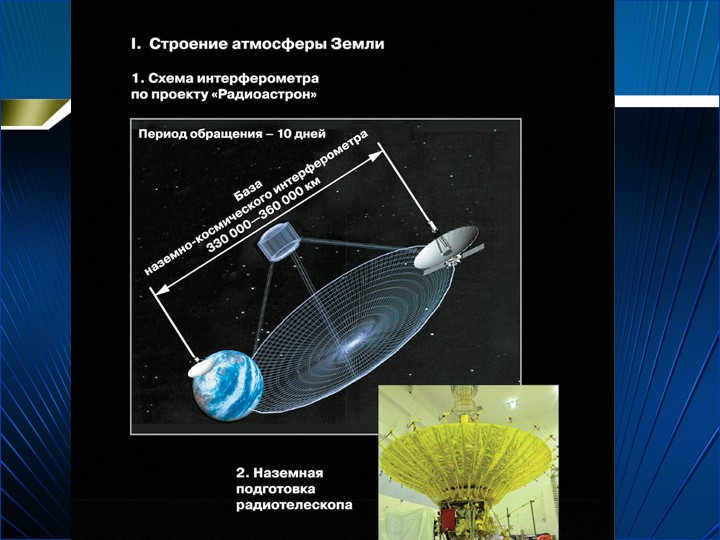
Slide 28: The implementation of the RadioAstron project will enable the exploration of various phenomena and processes, including neutron stars and supermassive black holes, the structure and dynamics of star formation regions within our Galaxy, as well as issues concerning the evolution of the Universe.
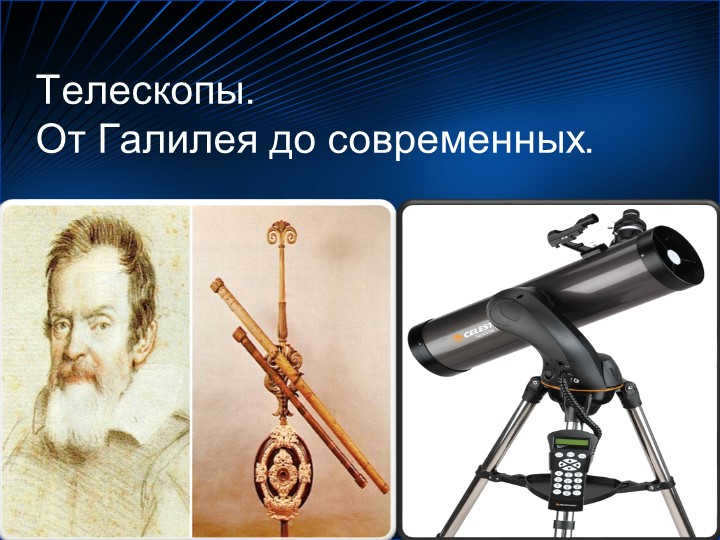
30 slide History of the telescope.
The Italian astronomer Galileo Galilei constructed the inaugural telescope in 1609. This particular telescope possessed relatively modest dimensions, with a tube length of 1245 mm, a lens diameter of 53 mm, and an eyepiece with 25 diopters. Additionally, its optical scheme was imperfect, and it offered a magnification of 30-fold.
On the other hand, the Hevelius telescope spanned an impressive 50 meters and relied on a system of ropes for suspension on a pole.
Contrastingly, Ozu’s telescope measured a stunning 98 meters in length. Remarkably, it lacked a tube, as the lens was positioned on the pole nearly 100 meters away from the eyepiece, which the observer personally held in their hands.
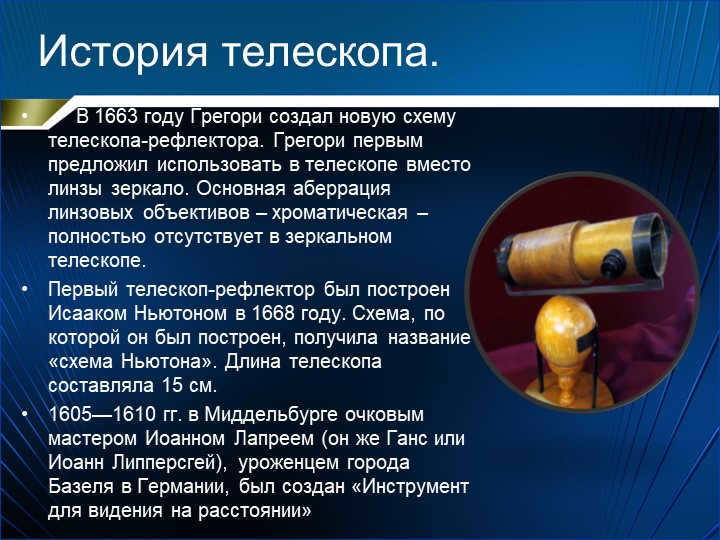
31 Slide History of the telescope.
In 1663, a new design for a reflector telescope was conceived by Gregory. Gregory was the first to propose the use of a mirror instead of a lens in a telescope. The primary flaw of lenticular lenses – chromatic aberration – is completely eliminated in a mirror telescope.
The initial construction of a reflector telescope was conducted by Isaac Newton in 1668. The design under which it was built became known as “Newton’s design”. The telescope had a length of 15 centimeters.
1605-1610. In Middelburg, the maker of optical instruments John Lapray (also known as Hans or John Lippersgei), who hailed from the city of Basel in Germany, developed the “Instrument for long-distance viewing”
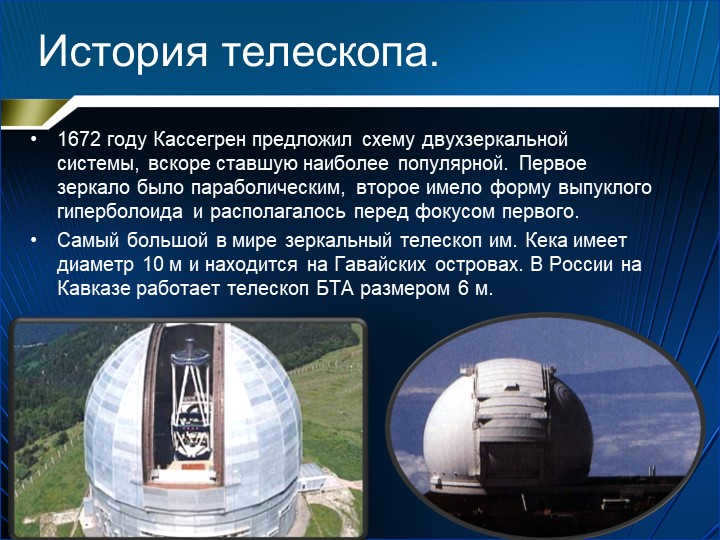
A fascinating journey through the history of telescopes unfolds before us. In the year 1672, a remarkable individual by the name of Cassegrain introduced an ingenious concept for a two-mirror system, which swiftly gained immense popularity. This revolutionary design featured a parabolic primary mirror and a convex hyperboloid secondary mirror positioned in front of the primary mirror’s focal point.
The illustrious Keck telescope, boasting an impressive 10-meter diameter, is hailed as the largest mirror telescope worldwide. It proudly resides in Hawaii, capturing the wonders of the universe. Meanwhile, in the enchanting Caucasus region of Russia, the 6-meter BTA telescope diligently carries out its astronomical endeavors.
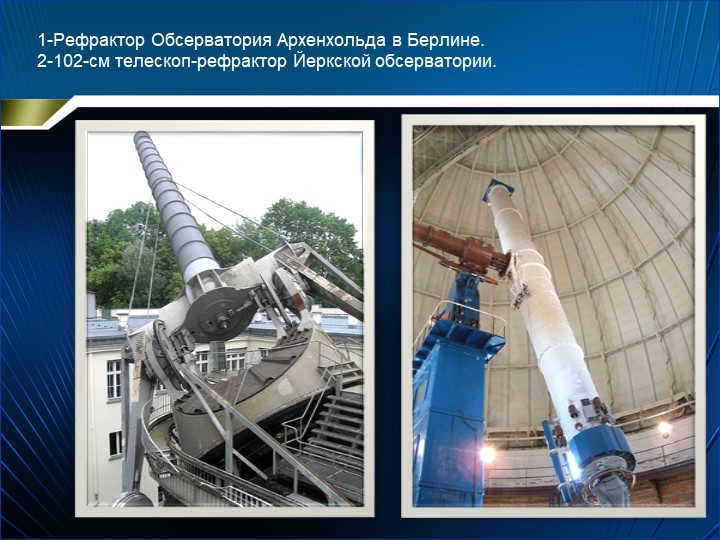
Slide 33 – The Archenhold Observatory in Berlin is equipped with a refractor telescope. Another famous refractor telescope can be found at the Yerkes Observatory, measuring 102 cm in diameter.
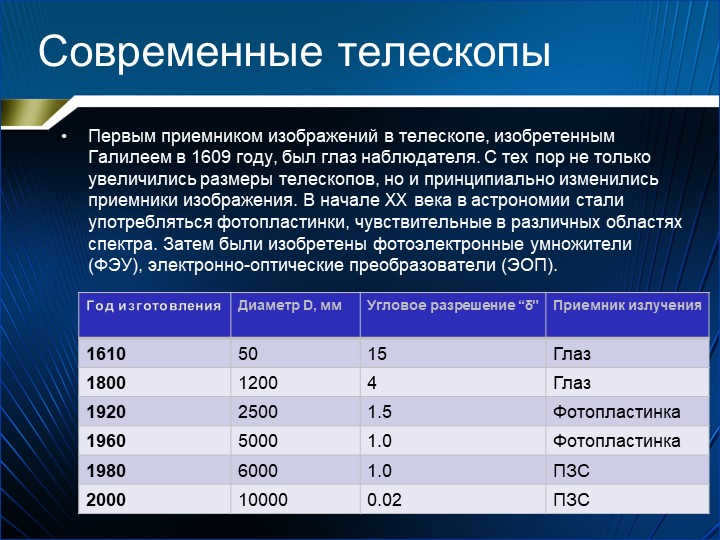

Modern telescopes have come a long way since Galileo invented the first imaging receiver in a telescope back in 1609. In the early days, the observer’s eye served as the receiver for the images. However, as time went on, telescopes grew in size and the technology behind image receivers advanced significantly.
By the beginning of the twentieth century, astronomers started using photographic plates that were sensitive to different regions of the spectrum. This allowed for more detailed and accurate observations. Later, photomultiplier tubes (PMTs) and electron optical converters (EOCs) were invented, further revolutionizing the field of astronomy.
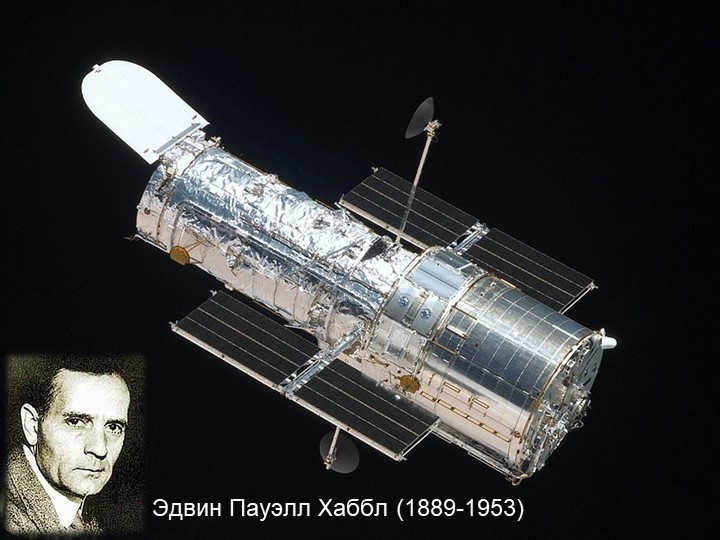
The diagram depicts the type of telescope used by Edwin Powell Hubble (1889-1953)
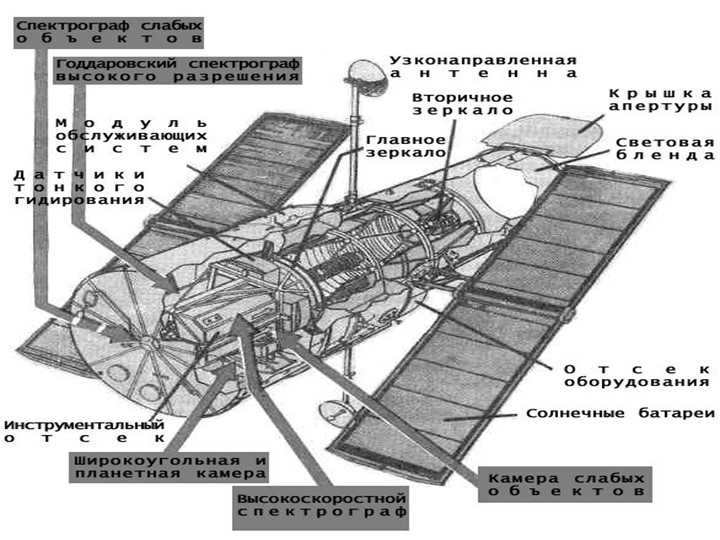

37 slide Homework
Exercise 1
1. Determine the magnification of a telescope using a lens with an optical power of 0.4 dptr as the objective lens and a lens with an optical power of 10 dptr as the eyepiece.
2. Calculate the amount of light collected by the largest Russian reflector telescope (mirror diameter 6 m) compared to a refractor telescope with a lens diameter of 60 mm.
Question: 1. When did the Radioastron project begin?
2. What is the primary scientific objective of this project.


Currently, there are additional cumulative discounts (ranging from 2% to 25%) offered to 58,742 educational establishments. To determine the applicable discount for all staff members of your educational institution, please log in to your personal Infoworks account.


Advanced Training Program
Expert in Occupational Safety
We can apply a discount from your educational institution to this offer (the amount of the discount depends on the number of your colleagues who have completed Infowork courses).
Currently, there are 58,742 educational institutions eligible for additional discounts (ranging from 2% to 25%). To find out the discount available to all employees of your educational institution, please log in to your personal Infoworks account.


Professional retraining program
Utilizing Library and Information Knowledge in the Teaching Process
We can apply a discount for your educational establishment in addition to this offer (the extent of the discount will depend on the number of your colleagues who have completed Infoworks courses).
Currently, there are 58,742 educational institutions benefiting from additional discounts (ranging from 2% to 25%). To find out the applicable discount for all staff members of your educational institution, please log in to your personal Infoworks account.


The GROW model by J. Whitmore and its application in coaching
Breakdown of the presentation by each slide:

Slide 1 of the MOU “Pokrovskaya Secondary General Education School” showcases various optical devices such as telescopes, microscopes, cameras, and projection apparatus.
Created by Gulshai Rizaeva, a talented eighth-grade student.

Slide 2 Contents.
1.Telescope
2.Structure of a telescope
3.Varieties of telescopes
4.Reflectors
5.Uses of telescopes
6.Microscope
7.Making a microscope
8.Use of microscope

There is a 3 slide Telescope.
A Telescope is an astronomical optical instrument used for observing celestial bodies such as planets, stars, nebulae, and galaxies. The Italian scientist G. Galileo made the first telescopic observations in 1609 when he first used a telescope to observe the sky.
Galileo’s best telescopes had a magnification of 32 times, which was sufficient to see mountains and craters on the Moon, discover the satellites of Jupiter, and observe many stars that are not visible to the naked eye.
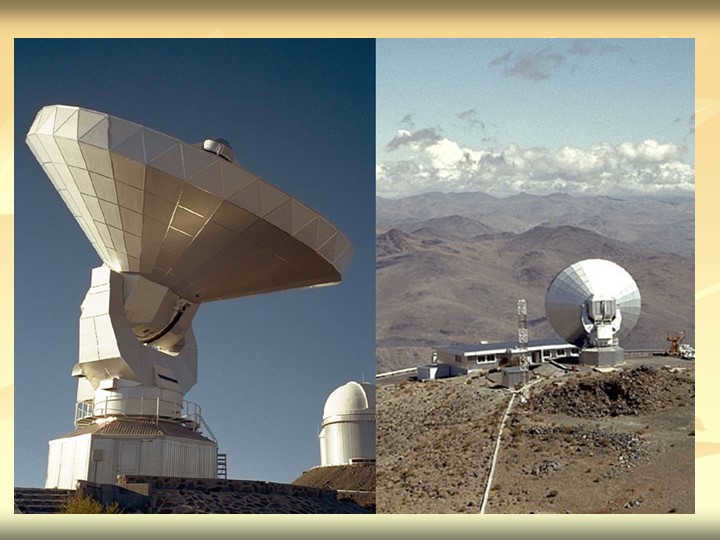
5 slide The structure of a telescope.
From a structural standpoint, a telescope consists of a tube, which can be solid, frame, or truss in design. This tube is mounted on a mount and is equipped with axes that allow the telescope to be pointed at specific objects and track them. The basic schematic of a simple telescope is as follows. At the front end of the telescope, there is a biconvex lens known as the objective lens. This lens allows light to pass through and collects it at the focus, where an image of the celestial body is formed. By using an eyepiece, the image can be magnified and viewed.

On the 6th slide, we can see the different types of telescopes available. Specifically, there are three main types: lenticular telescopes, mirror telescopes, and mirror-lenticular telescopes. The images provided in the figures depict the optical diagrams of a refractor telescope and a reflector telescope.

There are 7 types of refractors.
Refractors are equipped with a lenticular lens that creates an image of the observed objects by bending light rays. They are primarily used for visual and photographic observations. The production of large, uniform blocks of optical glass presents challenges, which is why the lens diameters are not typically large. The Pulkovo Observatory houses the largest refractor, which has a lens diameter of 0.65 m.

There are 8 slide Reflectors available.
Reflectors are a type of telescope that use a mirror lens to create images by reflecting light from a mirrored surface. In these types of telescopes, the main mirror is usually large in size. The rays of light that are reflected from the main mirror are then directed towards an eyepiece, which is located on the side of the telescope. Additionally, in the focal plane of the main mirror, photographic plates can be placed to capture images of celestial objects. Reflectors are primarily used for sky photography, photoelectric and spectral studies, and occasionally for visual observations.

Slide number 9 explores the various applications of telescopes.
Telescopes can be categorized into different types based on their specific uses. For instance, there are astrophysical telescopes that are used for studying stars, planets, nebulae, and the sun. There are also astrometric telescopes that are designed for precise measurements of stellar positions. Additionally, there are satellite cameras that are used to observe artificial satellites orbiting the Earth. Furthermore, there are telescopes specifically used for meteor patrols to observe meteors. Lastly, there are telescopes dedicated to observing comets and other celestial objects.


A Microscope with 10 slides.
The Microscope is a device that uses optics to produce a significantly magnified representation of objects that are not visible to the naked eye. Its name originates from the combination of two Greek words: mikros, meaning small, and skopeo, meaning I observe.
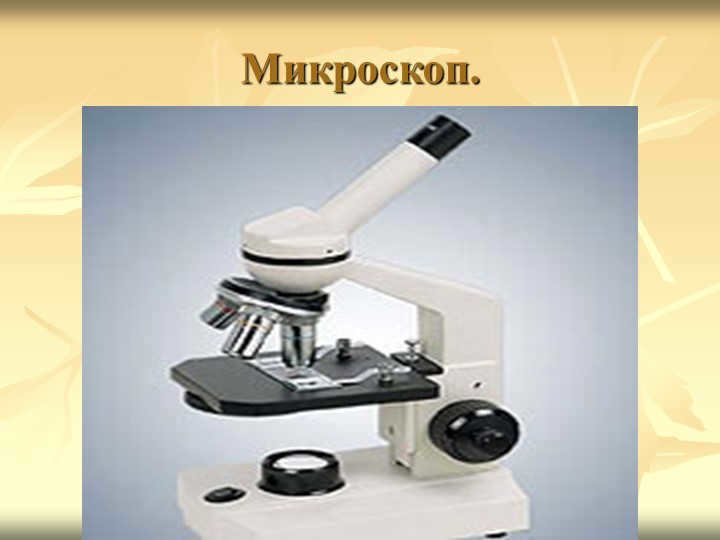
12 slide The Invention of the Microscope.
Historical records indicate that around 1590, a microscope-like device was invented in the Netherlands by Z. Jansen. A more advanced prototype, incorporating features of the modern microscope, was developed in 1665 by the renowned English physicist R. Hooke. Through the examination of thin slices of plant and animal tissues under the microscope, Hooke revealed the cellular structure of organisms. Additionally, in the years 1673-1677, A. Levenguc, a Dutch scientist, made groundbreaking discoveries in the field of microorganisms utilizing the microscope. These microorganisms were previously unknown to mankind.

Slide 13: Application of the microscope.
When the microscope is utilized, the object of examination (such as a sample, preparation, or biological specimen) is placed onto a slide. Positioned above the stage is a mechanism that houses the objective lenses and the eyepiece. The object being observed is illuminated by a system comprised of a lamp, an angled mirror, and a lens. The lens collects the rays that are scattered by the object and generates an enlarged image of the object, which can be observed through the eyepiece. The magnification of the microscope is determined by the focal lengths of the objective and eyepiece. An optical microscope has the capability to magnify up to 2,000 times.
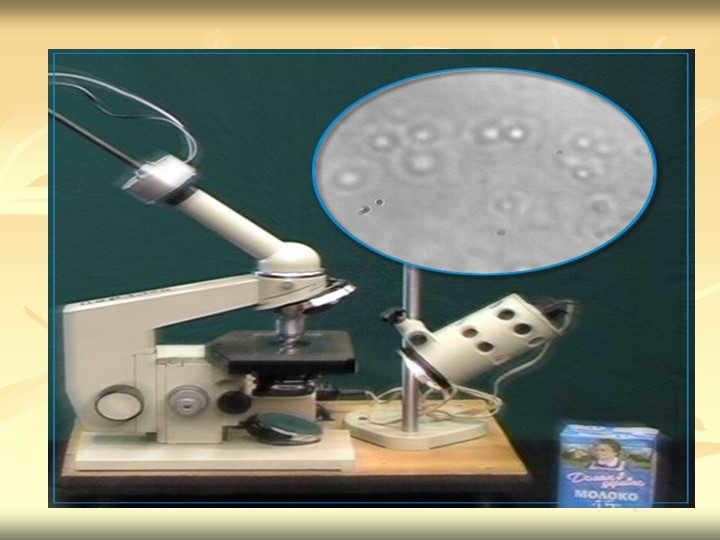

A 15-slide Electron microscope was constructed during the early 1930s. Unlike its optical counterpart, this particular microscope employs rapid electrons in lieu of light rays, as well as electromagnet coils or electron lenses instead of glass lenses. The object is illuminated by an electron “gun” as the source of electrons.

Slide 16 showcases the overall structure of the electron microscope. This remarkable piece of technology is composed of several key components, including: 1- anode, 2- cathode, 3- focusing electrode, 4- condenser lens, 5- objective lens, 6- projection lens, and 7- intermediate image. The intricate arrangement of these elements enables the electron microscope to achieve its impressive imaging capabilities.
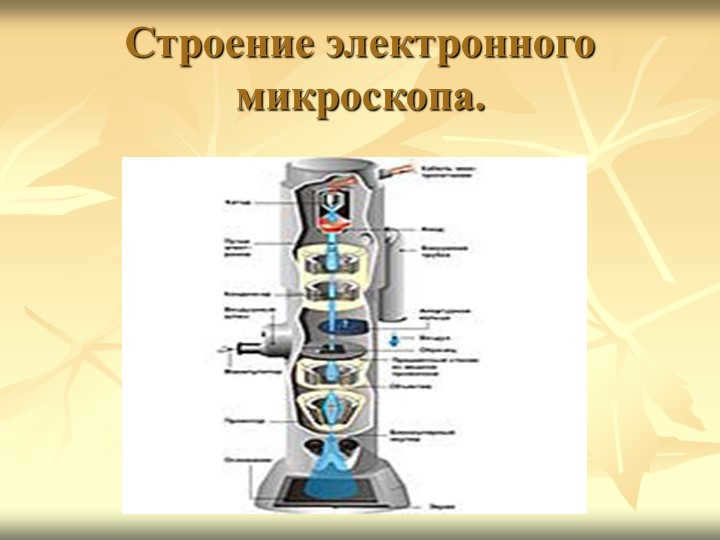
18 slide Camera.
A camera is a device used to capture images. It consists of a closed, light-tight enclosure that contains a system of lenses called a lens. When the camera’s shutter is opened, light enters through the lens and creates an image on a photographic film.
One unique aspect of a camera is its ability to capture sharp images of objects at different distances. This is achieved by adjusting the focus of the lens to ensure that all objects in the frame are in focus.
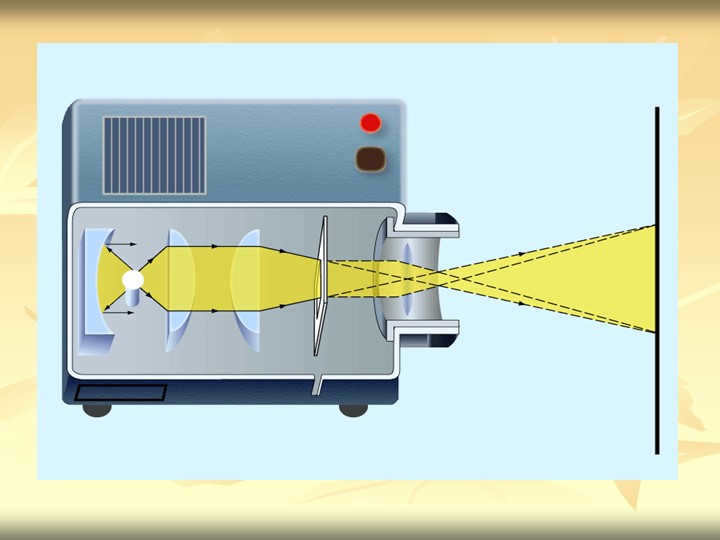
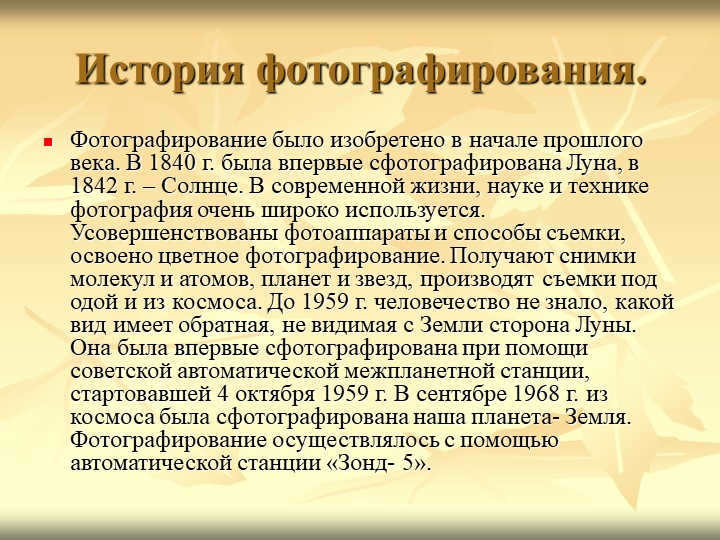
21 slide History of photography.
Photography emerged in the early 19th century. The first photograph of the Moon was captured in 1840, followed by the first photograph of the Sun in 1842. In today’s world, photography plays a significant role in science and technology. The advancements in cameras and photographic techniques have led to the mastery of color photography. Now, we can capture images of molecules, atoms, planets, and stars. We can even photograph the hidden side of the Moon, which was first accomplished by the Soviet automatic interplanetary station launched on October 4, 1959. In September 1968, the Earth was captured in a photograph taken from space by the automatic station “Zond-5”.

22 slide Projection apparatus.
The projection apparatus is designed for the purpose of obtaining large-scale images. The lens O of the projector is responsible for focusing the image of a flat object (diapositive D) onto a distant screen E. The condenser, known as lens system K, is utilized to concentrate the light from the source S onto the diapositive. On the screen E, an actual enlarged inverted image is formed. The magnification of the projection apparatus can be adjusted by altering the distance between the screen E and the slide D, as well as by changing the distance between the slide D and the lens O.
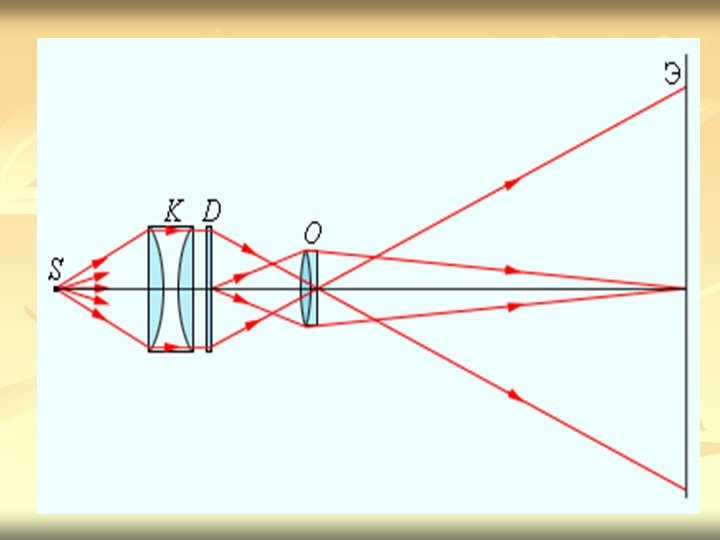
Resources and materials for educators and teachers
Over 10,000 educational materials for both traditional and homeschooling
A telescope, derived from the Greek words “tele” meaning far away and “scopio” meaning looking, is a tool that enables the observation of celestial objects and the collection of data about them.
Today, there are various types of telescopes, each operating on a different principle:
Telescopes also encompass neutrino detectors and gravitational wave detectors.
Optical instruments were the first telescopes. References to an instrument with optical lenses can even be found in the works of Leonardo da Vinci, although it was a primitive system. However, the credit for creating the very first functioning telescope goes to John Lippersgei in 1608, although it is speculated that Zachary Jansen may be the true father of the first telescope.
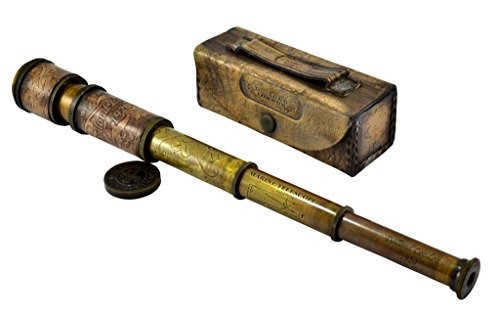
Figure 1: Lippersguy’s telescope
Lippersguy’s telescope, in fact, was a revolutionary instrument used by the scientist to observe celestial objects.
Galileo further improved the Lippersguy system, transforming it into a refractor telescope, which greatly enhanced the capabilities of space exploration. Throughout his lifetime, Galileo continuously refined his telescope, with his final model achieving a magnification of 32x.
The term “telescope” itself was initially proposed by the Greek mathematician Ioannis Dimisianos in 1611, as Galileo had previously referred to his instruments as perspicillum – “spectacles”.

If you need assistance, you can try reaching out to your professors.
Throughout the twentieth century, there were continuous improvements made to the design of telescopes. In 1937, a telescope that operated on radio waves was invented. Since then, more advanced systems have been developed that work across a wide range of wavelengths.
Types of Optical Telescopes
All optical telescopes can be categorized into three groups based on their design:
- Lens (dioptric) or refractor telescopes. These telescopes have an objective lens that is made up of one or more lenses.
- Mirror (catoptric) or reflector telescopes. The objective lens of these telescopes is a curved mirror.
- Mirror-lens (catadioptric) telescopes. These telescopes have a main lens that is a spherical mirror, with additional lenses added to compensate for any errors.
Catadioptric telescopes have the option of using a single lens or a combination of lenses, such as an aspherical lens or an achromatic Maksutov meniscus, for compensation. In some cases, the main mirror may have a flattened, spheroidal, or ellipsoidal shape in order to correct for errors in the telescope’s system.
Scientists who study the Sun in their astronomical research utilize telescopes with unique designs.
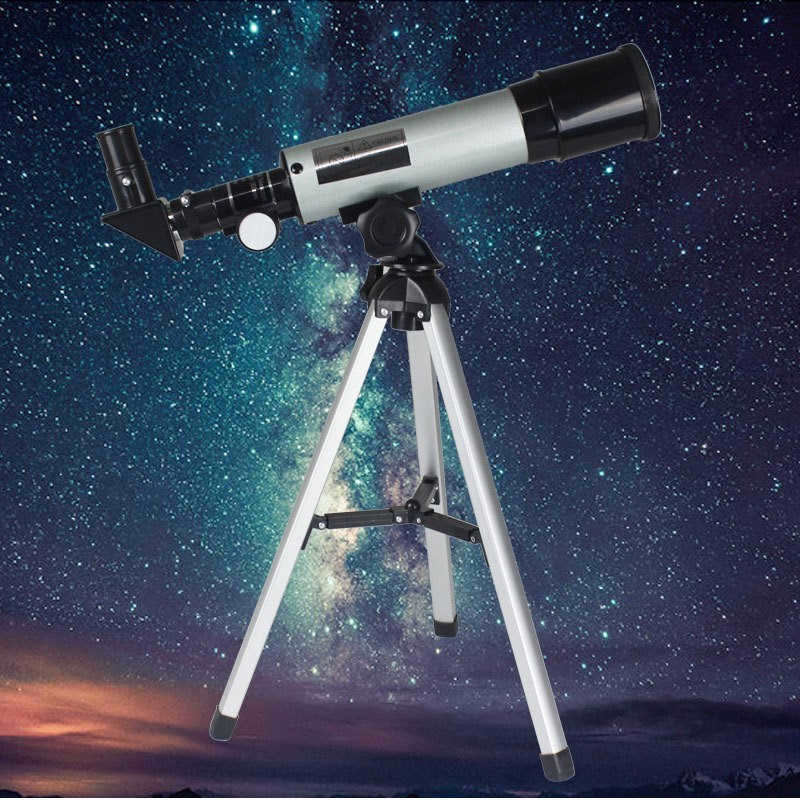
Figure 2: Representation of an optical telescope
Radio telescopes
Radio telescopes are utilized for the examination of celestial bodies that emit radio waves. These telescopes comprise of an antenna and a radiometer, which is responsible for measuring the energy characteristics of radio radiation.
Due to the wider range of radio waves compared to optical waves, various telescope designs are employed to capture radio beams. Telescopes equipped with simple receivers like dipoles are used to study the meter (long-wave) range, which spans from tens to hundreds of MHz. Powerful rotating parabolic antennas are utilized for investigating centimeter and decimeter waves, which have frequencies in the tens of GHz.
By combining multiple radio telescopes into a single system, it is possible to enhance their ability to resolve details, thus enabling the creation of ultra-long baseline radio interferometry. This involves combining several radio telescopes situated at various locations across the Earth.
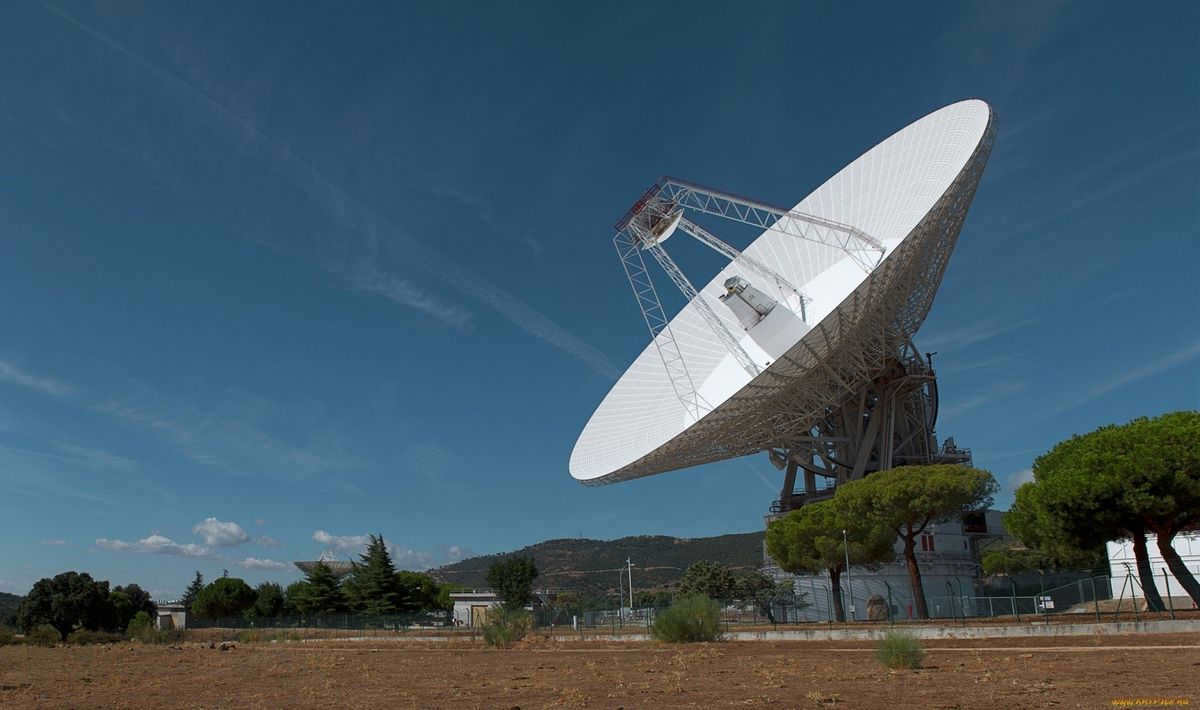
Types of Telescopes in Space
Despite the fact that the optical signal is transmitted well through the Earth’s atmosphere, the different frequencies of light are distorted due to coherent scattering. This distortion affects the stellar spectrum and also impacts the quality of the image. Telescopes located on the planet’s surface have a resolution limit of one angular second due to the atmospheric inhomogeneity. To overcome this limitation, telescopes are positioned at higher elevations where the atmosphere is less dense.
By placing telescopes outside the Earth’s atmosphere, image distortions are completely eliminated. In this case, the quality of the image is solely determined by the diffraction limit.

Are you having difficulty finding a solution by yourself?
Consider seeking assistance from your professors
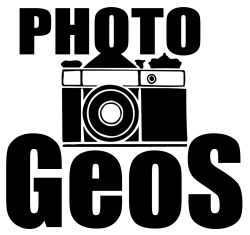
When an average individual, lacking extensive knowledge of astronomy, purchases a telescope, they often mistakenly believe that its primary function is magnification. However, this perception of the instrument is incorrect, as a telescope is primarily designed for collecting starlight. Therefore, the better the telescope performs this function, the greater the observer’s ability to detect the most distant and faint celestial bodies in the sky.
Telescopes come in various types, each with its own unique features. It is important to consider the specific characteristics and individual aspects that describe their physical features and equipment. It is not uncommon for a beginner astronomer to feel overwhelmed when trying to determine the right type of telescope. However, the type of telescope plays a crucial role in its performance, as factors such as price, mobility, and the quality of celestial observation depend on it. In the following sections, we will provide a brief overview of the main types of telescopes, highlighting their distinctive features and characteristics.
Various Kinds of Telescopes
The telescope’s optical system always includes a sealed tube, which sets it apart from the Newton telescope in terms of minimal dust and dirt accumulation. This type of optical device can quickly adapt to different temperature conditions, allowing for immediate use after moving from indoors to outdoors, although a short wait may still be necessary during winter.
Training Level: Suitable for beginners and advanced users
Views: Galileo, Kepler, achromat, apochromat
Type of Mount: Entry level, benchtop, alt-azimuth, equatorial
Objects of Observation: Double stars, the Moon, planets of the Solar System
Pros: High reliability, fast thermal stabilization, no need for periodic adjustments
Cons: Long optical tube, heavy weight, color distortion, high cost
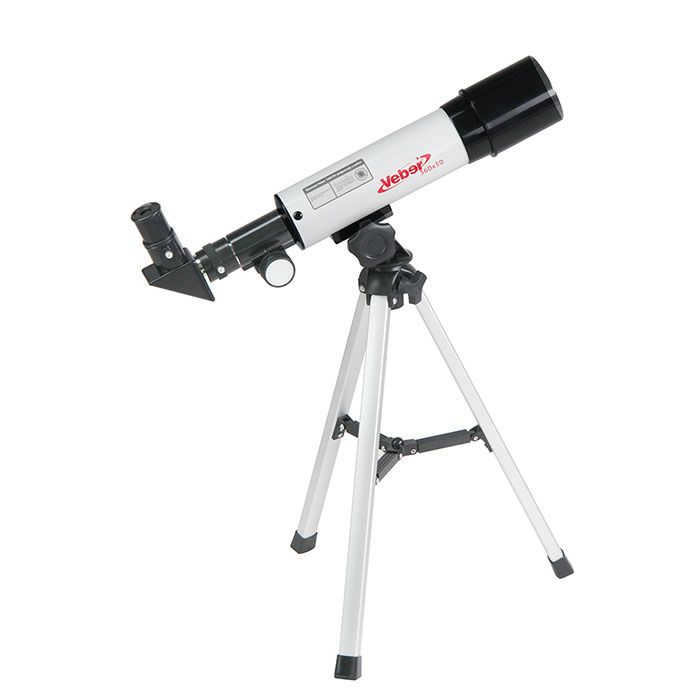
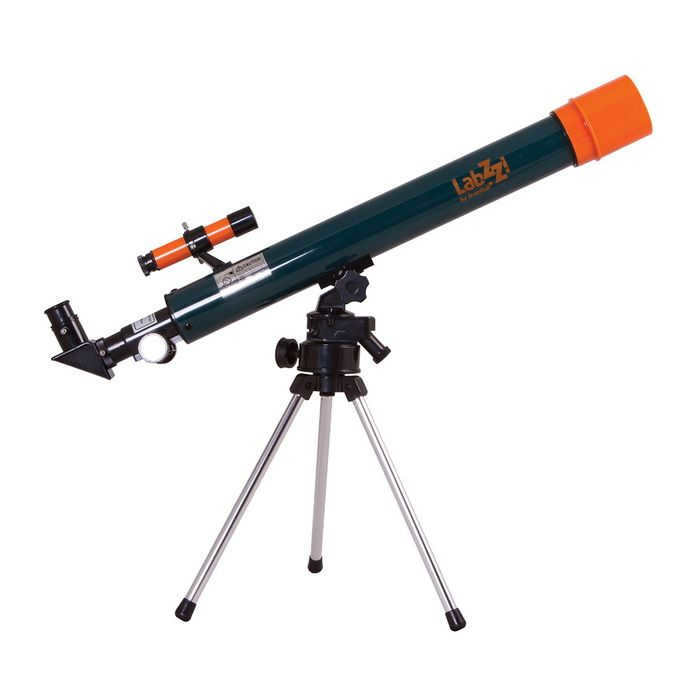
Level of training: suitable for experienced individuals
Categories: Newton, Gregory, Cassegrain, Ritchie-Cretien, Korsch, Herschel, Schmidt
Mount type: alt-azimuthal, equatorial
Observation targets: deep space objects such as galaxies, star clusters, and nebulae
Advantages: compact size, moderate cost, absence of chromatic aberration
Disadvantages: regular maintenance and adjustment of mirrors required, lengthy thermal stabilization time
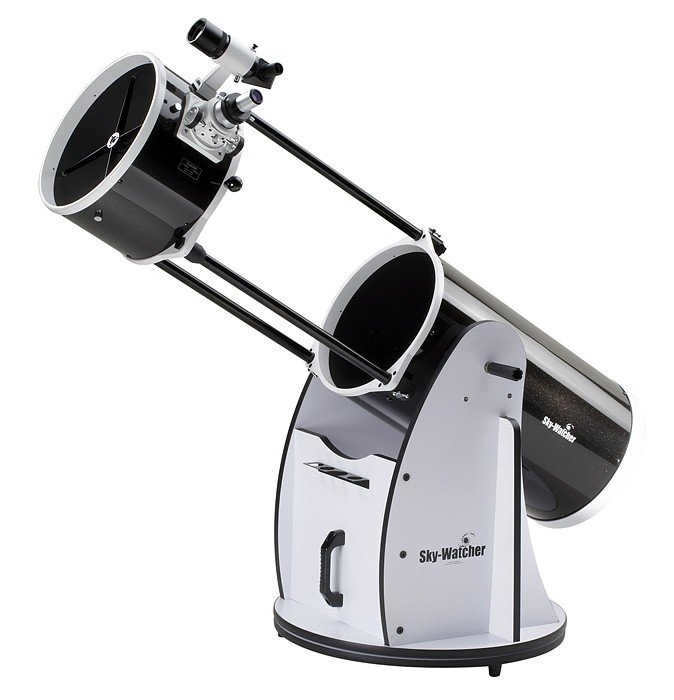
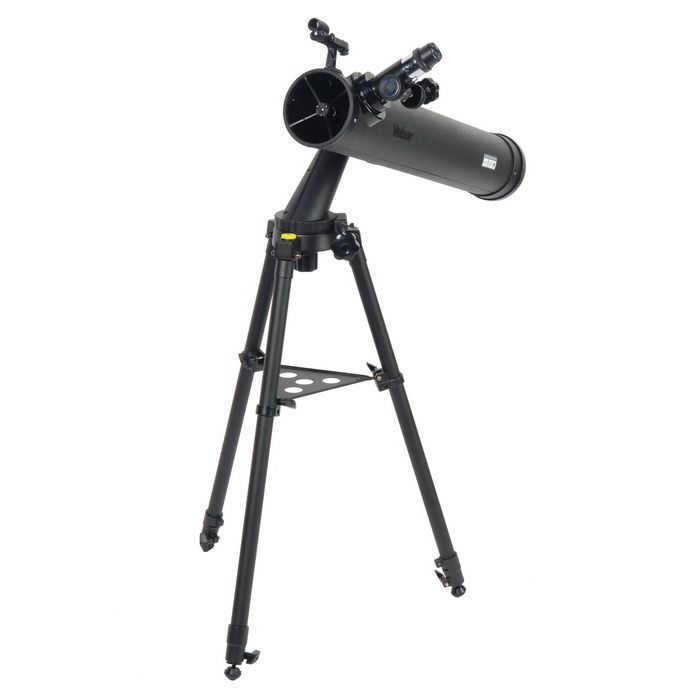
When it comes to telescopes, catadioptric telescopes are the way to go. These optical instruments combine the best of both worlds by incorporating both refractor and reflector technology. They are often considered the “universal” choice among telescopes. Amateur astronomers tend to prefer telescopes based on the Cassegrain design, such as Schmidt-Cassegrain and Maksutov-Cassegrain telescopes.
If we take into consideration the Schmidt-Cassegrain telescope, it is important to note that both the primary and secondary mirrors are spherical in shape. When utilizing this system, the most noticeable issues are the field curvature and coma, which can be corrected using specialized lenses. However, “catadioptrics” offer several advantages. For instance, they have a shorter tube and lower mass compared to Newtonian reflectors with the same focal lengths. Additionally, catadioptric telescopes do not have secondary mirror mounting straps. Furthermore, owners of mirror-lens telescopes do not have to worry about maintenance due to the closed tube, preventing the formation of air currents and dust accumulation.
The Maksutov-Kassegren optical system features spherical mirrors and a lenticular convex-concave corrector-meniscus, which effectively corrects for aberrations. The meniscus reflectors are enclosed in a sealed tube, eliminating any stretching and allowing for the correction of all possible aberrations when the system parameters are properly selected. Maksutov-Cassegrain telescopes offer several advantages over Schmidt-Cassegrain instruments, including quicker thermal stabilization thanks to the Schmidt plate and easier installation of the lens corrector.
Catadioptrics are primarily focused on comfort and compactness. Amateur astronomers have long used small meniscus telescopes with lightweight tubes for observations in the countryside due to their ease of transportation in a car’s trunk. However, mirror-lens telescopes have a drawback in their low luminosity, resulting in distorted images of deep space objects.
Level of expertise: Suitable for experienced individuals.
Types: Schmidt-Cassegrain, Maksutov-Cassegrain.
Mount type: Dobsonian, alt-azimuthal.
Observation targets: Moon, planets of the solar system, stars.
Pros: Versatility, compactness, minimal aberrations, easy transportation, adaptability for astrophotography.
Cons: Complex construction, high cost, requires 2-3 hours of thermal stabilization.
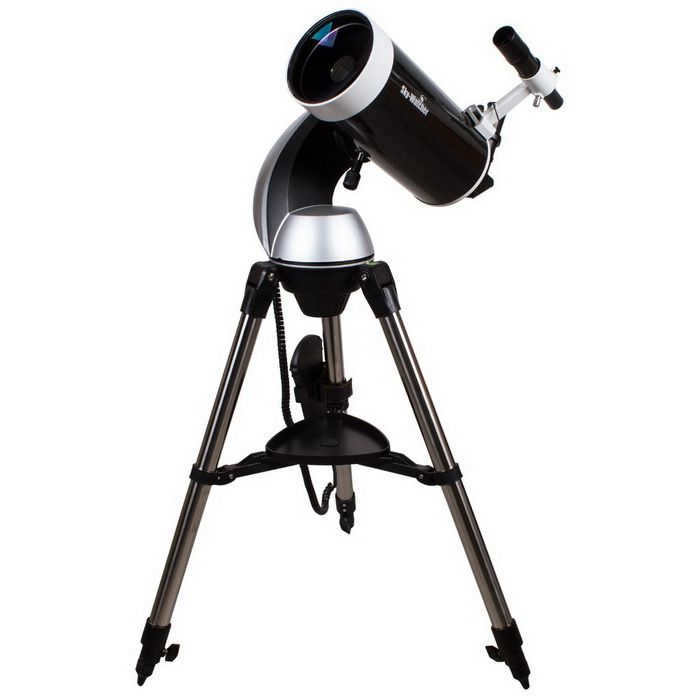
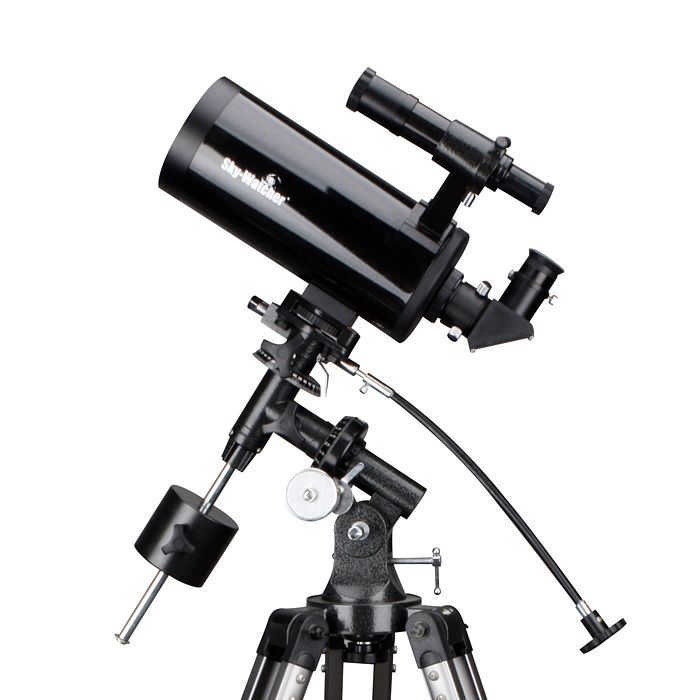
Optical Configurations of Telescopes
The image quality of the observed object is directly influenced by the type of telescope and its constituent parts, as well as the optical configuration it is equipped with. In reality, there are numerous optical configurations for telescopes, which can be further classified into various types. Many amateur astronomers tend to favor the classical configurations, and we will discuss them in detail below.
Newton’s design is widely recognized as the most popular optical design. The way the Newton telescope works is by using a flat diagonal mirror near the focal point. The primary mirror, which is usually parabolic but can be spherical with a relatively small aperture, reflects the light beam at a 45-degree angle, allowing for photography or viewing through an eyepiece.
Applications: long and short Newtonian reflectors
Objects of observation: planets in the solar system
Advantages: affordable price, lightweight, wide field of view, high magnification for observations
Disadvantages: potential for spherical aberration, degradation of image quality over time, periodic realignment required
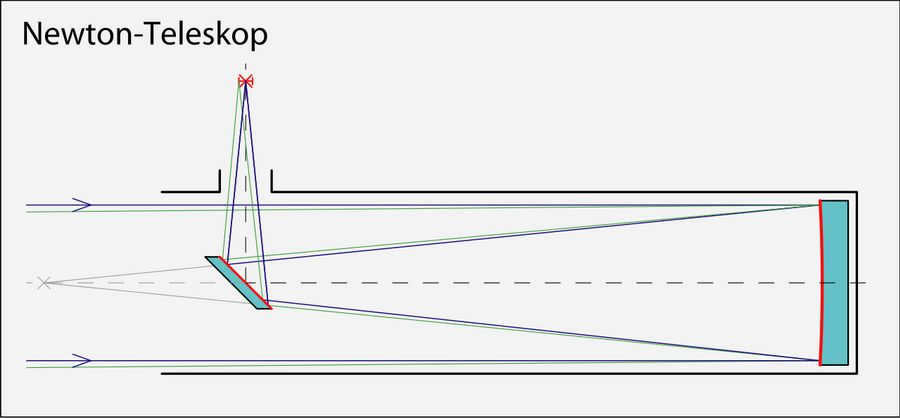
The Galileo’s design The Galileo’s design emerged due to a telescope that incorporated a single objective lens for collecting light and a separate eyepiece lens for scattering the light. The main advantage of this design is the resulting image, which is upright and not inverted. However, there are some drawbacks, including a very narrow field of view and significant chromatic aberration. The Galileo system is particularly suitable for applications such as theater binoculars and homemade telescopes used by amateur astronomers.
Applications : Long and short achromats, apochromats are commonly used.
Objects for viewing : The Moon, planets in the solar system, nebulae, comets, and galaxies.
Advantages : The telescope has a closed tube design, providing excellent focus and a large aperture for observing faint extended objects. It also retains image quality over a long period of time.
Disadvantages : However, this type of telescope is typically expensive and there is a possibility of the multi-lens lens “unmolding” or delaminating over time. Additionally, it can be quite heavy.
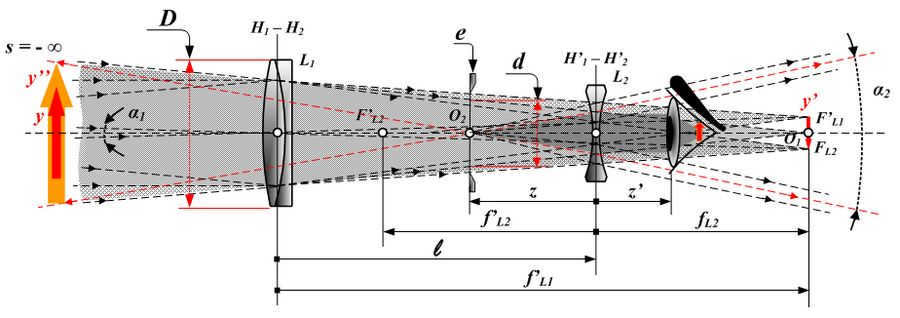
Johannes Kepler once had the intention of enhancing the performance of his refractor by substituting the scattering lens in the eyepiece with a collecting lens. However, this simple improvement led to the creation of a completely new system, now known as the Kepler’s optical scheme. The replacement of the lens resulted in a larger pupil and field of view, but unfortunately, it also produced an inverted image. The Kepler tube contains an intermediate image, and this plane can be equipped with a measuring scale. As a result, modern refractors can be considered as successors of the Kepler tube. The only drawback of the system is its strong chromatic aberration, which can be easily corrected by using an achromatic lens.
Refraction telescopes are utilized to observe the Moon, planets within our solar system, their satellites, and asteroids. These telescopes offer several advantages including a large field of view, high-quality image (when compared to Galileo’s system), and a high magnification ratio. However, there are also some disadvantages to using refractors, such as an inverted image and significant chromatic aberrations.
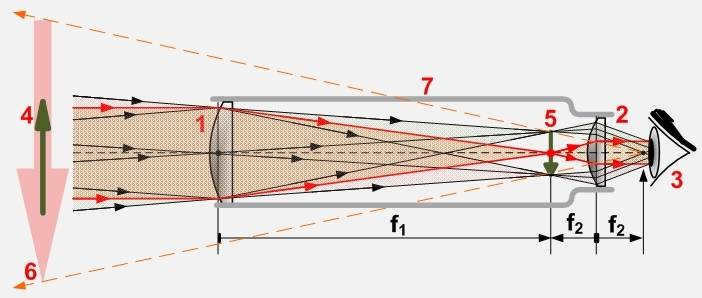
Gregory’s optical design is a type of telescope that utilizes a parabolic concave mirror to reflect the path of light onto a smaller elliptical mirror. The secondary mirror then directs the light back to the central aperture, where the eyepiece is located. This design offers several advantages over Newton’s design, as the shorter focal length produces a straight image of the observed object.
Application: reflectors
Objects of observation: planets within the solar system, terrestrial objects
Pros: high image magnification, long focal length, ability to capture images of space and terrestrial objects
Cons: lengthy tube, need for constant alignment, excessive shielding, susceptibility to thermal currents, heavy weight

Application: reflectors
Observed subjects: planets in the solar system
Advantages: central shielding, excellent image quality
Disadvantages: difficulties in protecting against direct ray illumination of the image, aberrations on the image edges.
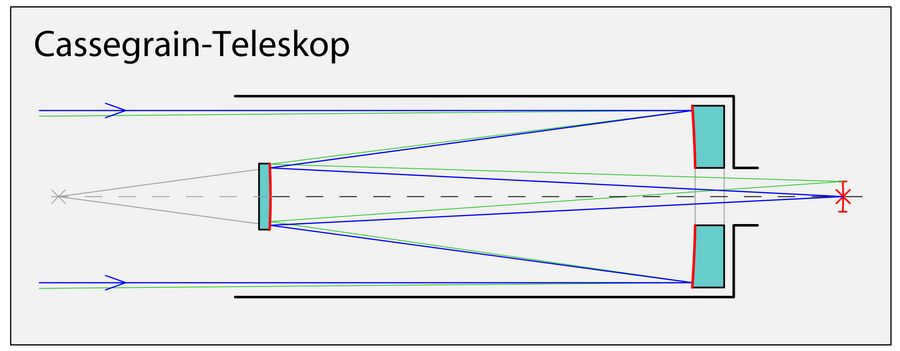
By enhancing the design of the Cassegrain telescope and substituting the primary parabolic mirror with a hyperbolic one, it is possible to achieve a Ritchie-Cretien optical system in which the field of view is approximately 4 degrees. This particular system is extensively utilized in the construction of large-sized reflectors, as its primary advantage lies in the complete absence of coma, enabling the production of high-quality astrophotography. Similar to the Cassegrain system, the Ritchie-Cretien scheme possesses an equivalent focal length that significantly exceeds the length of the telescope tube. This design would be perfect for situations where moderate relative apertures are required for producing large-scale images.
Applications : Reflectors are commonly used for observing the Moon, planets in the solar system, and galaxies.
Advantages : Reflectors do not have third-order coma or aberration, and they are easy to use and align.
Disadvantages : However, careful observation of mirror centering is required during operation, and direct focus may be inaccessible due to the location of the secondary mirror.
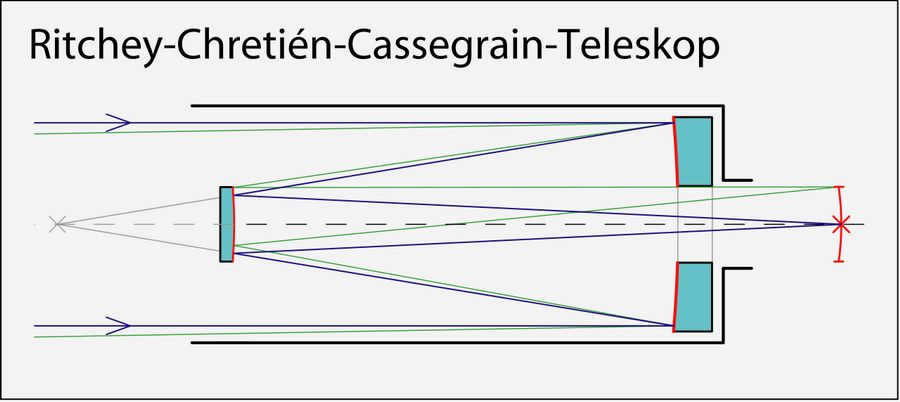
Mounts for Telescopes
The azimuthal mount allows for free movement of the telescope tube in both vertical (up and down) and horizontal directions, along the azimuth, hence the name. An example of such a mount is a regular photographic tripod. The mounts are typically divided into generations: AZ1 does not have a system of fine adjustments, AZ2 has a fine adjustment feature in the vertical direction, and AZ3 and AZ5 are equipped with knobs for fine adjustments in both vertical and horizontal directions.
Advantages: compact, lightweight, intuitive design, fully assembled and ready to use, suitable for beginners.
Disadvantages: does not allow for “guiding” of celestial objects, not upgradeable.
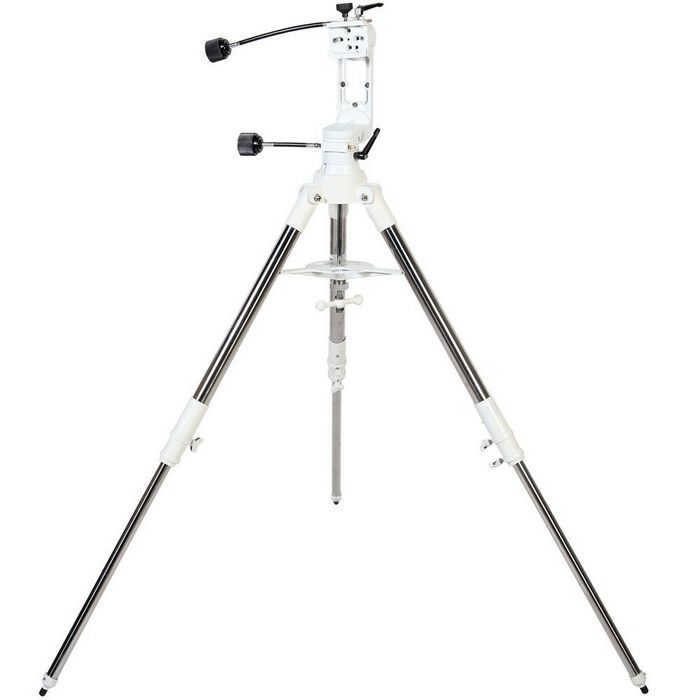
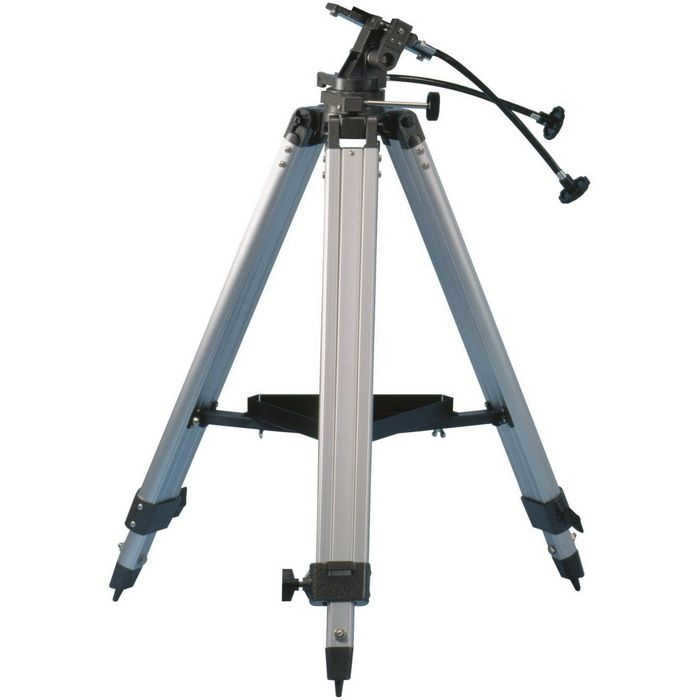
Equatorial mount is a type of mount that has one axis aligned with the Earth’s axis. This equipment allows for easy tracking of celestial objects, making it possible to capture high-quality astrophotography. Equatorial mounts are categorized into generations EQ1, EQ2, and EQ3, each differing in terms of adjustment complexity and accuracy for observations.
Advantages: The telescope offers the opportunity to “steer” the object, making it suitable for astrophotography. It also provides good rigidity and stability, and the possibility to install motors for tracking celestial bodies. Additionally, it can be upgraded to computerization.
Disadvantages: However, there are some drawbacks. It requires pre-tuning and is quite heavy. It is not very suitable for observing terrestrial objects. Finally, operating the telescope requires certain skills and knowledge.
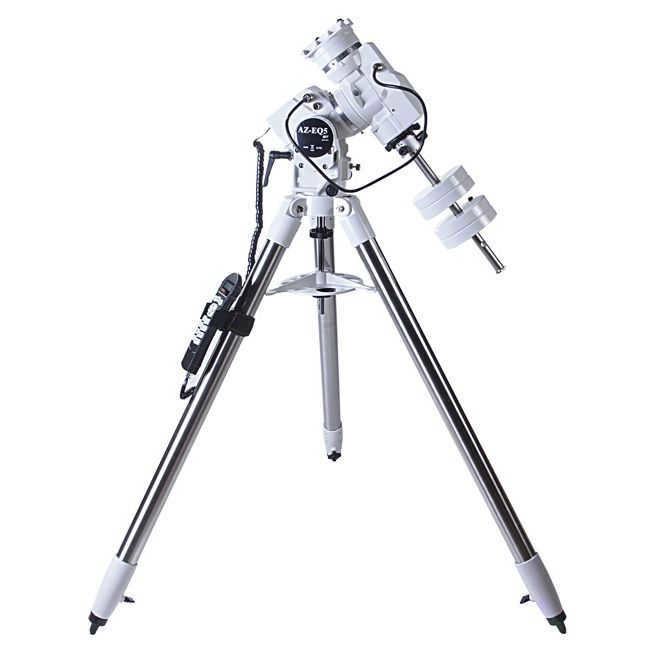
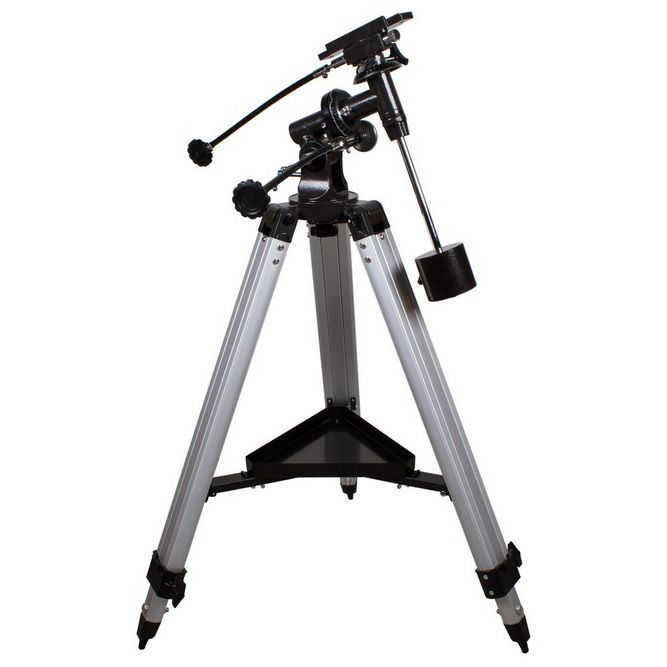
The Dobsonian mount is considered a type of azimuthal mount designed specifically for reflector telescopes with an aperture size larger than 200 mm. It is well-known for its exceptional stability, simplicity, and easy installation process. This mount allows for seamless vertical and horizontal (azimuth) movement of the telescope tube.
Advantages: Provides stability for large reflector telescopes, eliminates the need for presetting, offers options with automatic pointing capabilities.
Disadvantages: Limited suitability for observing terrestrial objects, requires a flat surface for installation.
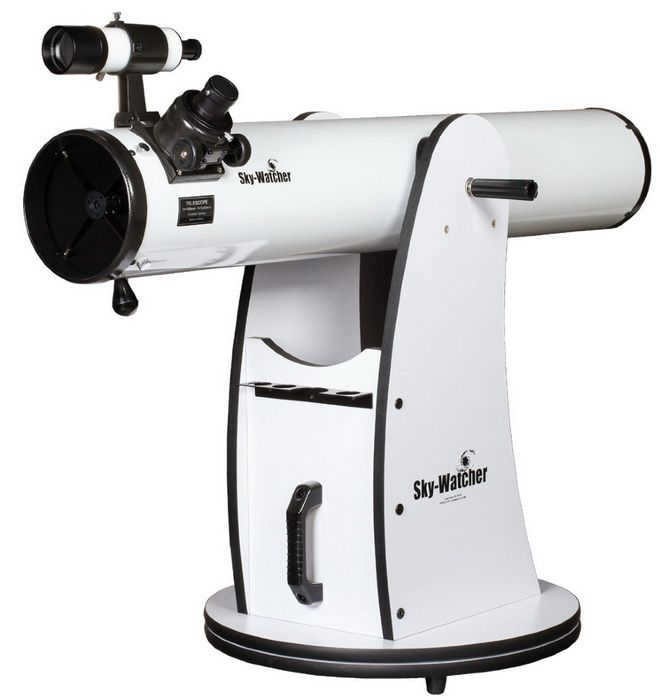
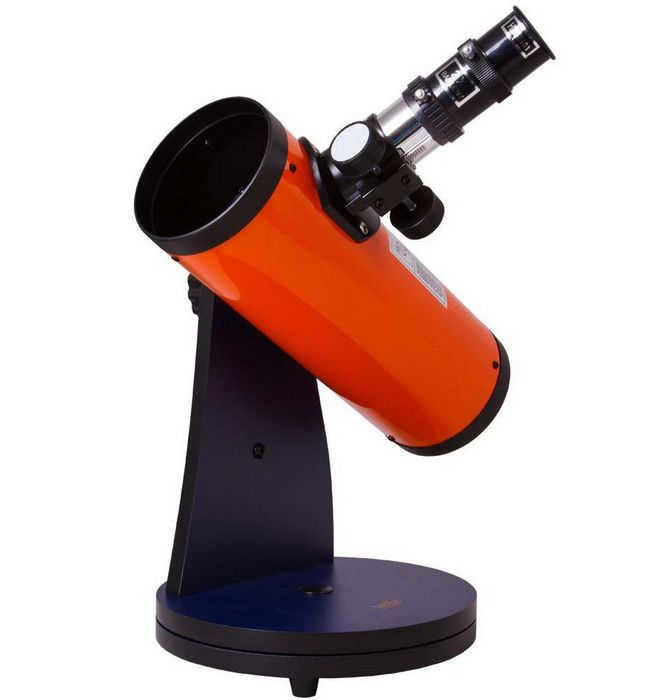
The computerized mount is a versatile option for astronomers of all experience levels. It is utilized in contemporary telescopes, implementing a range of technologies, from computer control to computerized pointing. Naturally, the cost of these devices is quite high.
Advantages: Ideal for astrophotography, includes a database of celestial objects and automatic pointing function, features automatic object tracking.
Disadvantages: Requires presetting before use.
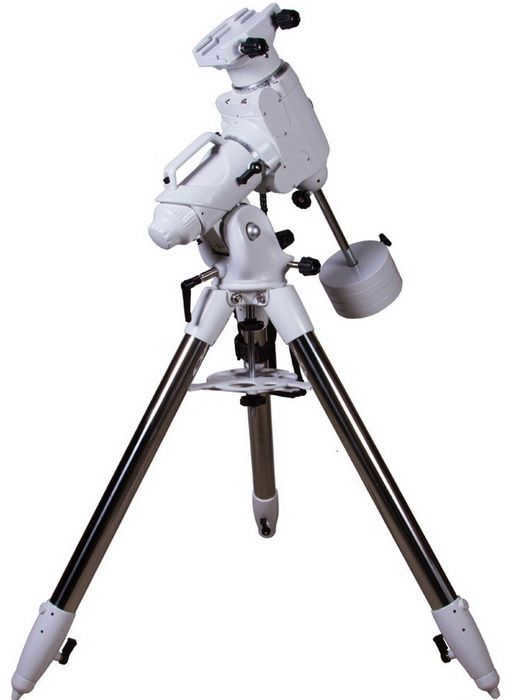
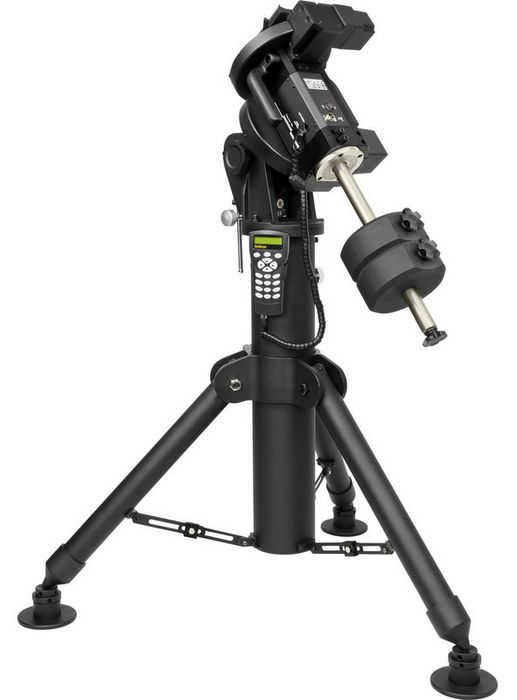
Characteristics of Telescopes
Aperture (Lens Diameter)
The diameter of the objective lens or mirror in a telescope is known as the aperture. In refractor and catadioptric telescopes, the aperture refers to the diameter of the lens that collects light, while in reflector telescopes, it refers to the diameter of the main mirror. The larger the aperture, the more light the telescope can collect. A larger aperture allows for clearer views of objects, higher magnification, and the ability to see dimmer celestial bodies. Aperture is typically measured in inches or millimeters.
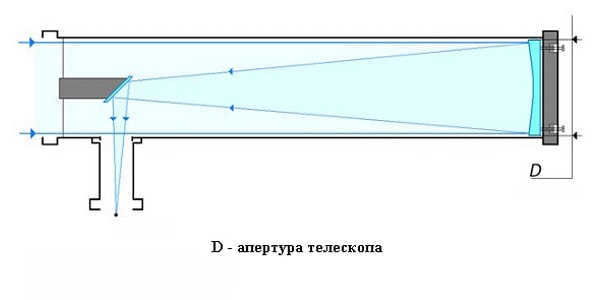
What is Focal Length?
The focal length is the measurement from the objective lens to the point where the refracted or reflected rays from the lens in a refractor, reflector, or catadioptric telescope converge. The final magnification of the telescope is determined by the focal lengths of both the telescope and the eyepiece. Telescopes can be categorized as either short-focus or long-focus telescopes. A short-focus telescope has a focal length of less than 7, providing a wide field of view. On the other hand, a long-focus telescope achieves higher magnification.
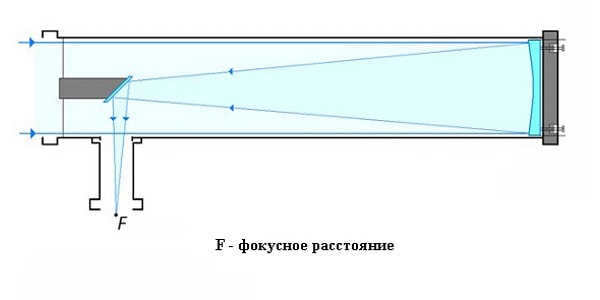
Magnification (magnification)
The image depicts a specific type of telescope.
Zoom (amplification)
The telescope’s magnification denotes how much the observed object will be enlarged. Amateur astronomers typically use telescopes with magnifications ranging from 40 to 160. To calculate the magnification of a telescope, simply divide its focal length by the focal length of the eyepiece. It is important to consider the intended use of the telescope when selecting an optical instrument. Telescopes with lower magnification are ideal for observing deep space objects, while those with higher magnification are better suited for brighter objects like the Moon and planets within our solar system. The maximum useful magnification of a telescope, which ensures optimal image quality, can be determined through a simple calculation: multiply the diameter of the lens by two, and then multiply that by 0.15. This will yield the minimum useful magnification of the telescope. The resulting range of values represents the maximum comfortable magnification for the observer, allowing for distortion-free and high-quality images of celestial bodies. Higher magnification is recommended for observing the Moon and planets, while for exploring deep space objects, it is advisable to consider the telescope’s aperture.
Lighting has an impact on the image’s quality. The glass-to-air surfaces are fitted with a multi-layer coating that reduces reflection, resulting in optimal picture quality.
Limit of Stellar Magnitude
Stars and objects in deep space possess a specific level of brightness, which directly influences their limiting stellar magnitude. The brighter the celestial body, the lower its limiting stellar magnitude.
Dimensions of a Telescope
The size and proportions of a telescope are referred to as its dimensions. For instance, the focal length of a refractor telescope and its abilities are directly influenced by the length of the tube. The substantial weight of the telescope necessitates a specialized mount that can balance it and also adds to the challenge of transporting it.
Unique aspects of working with telescopes
Image anomalies
When utilizing a telescope in unfavorable conditions, where the temperature of the device does not align with the surrounding temperature, and due to the specific traits of the optical system, distortions in the image of the observed object can occur. These distortions can be rectified by utilizing additional equipment. For instance, if a refractor displays halos of specific colors around bright objects, it may be worthwhile to invest in a specialized corrective lens to address this issue. In certain instances, reflectors with a short focus may reflect objects in an elongated shape, resembling comets or pears. In such cases, experienced amateur astronomers often opt to install a coma corrector in the telescope focuser.
Thermal stabilization
Prior to commencing work, it is important to allow large refractors and catadioptric telescopes to achieve thermal equilibrium with the surrounding environment. The duration of this equilibration period varies depending on the size and mass of the lens: the larger these values, the longer it takes for the telescope to reach a stable temperature. This phenomenon can be observed when taking the telescope outdoors in cold weather; due to the equipment being warmer than the air, the image in the lens starts to waver as a result of active air currents. Conversely, if the telescope is colder than the surrounding temperature, it may experience unwanted condensation, resulting in a foggy lens and a blurred image of the observed object.


